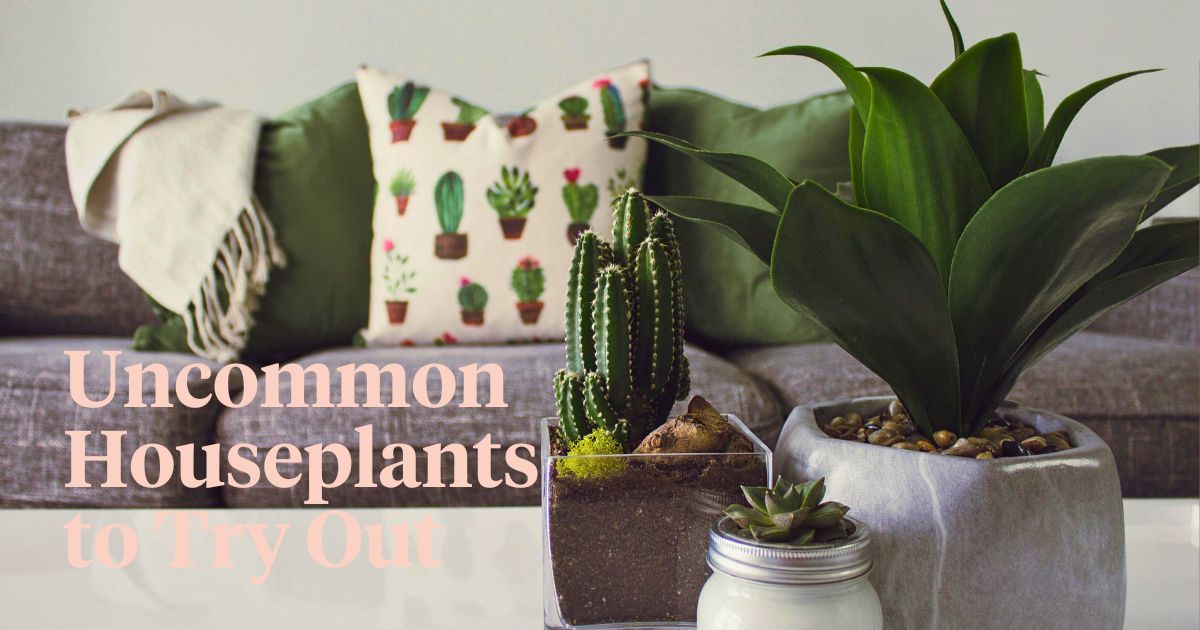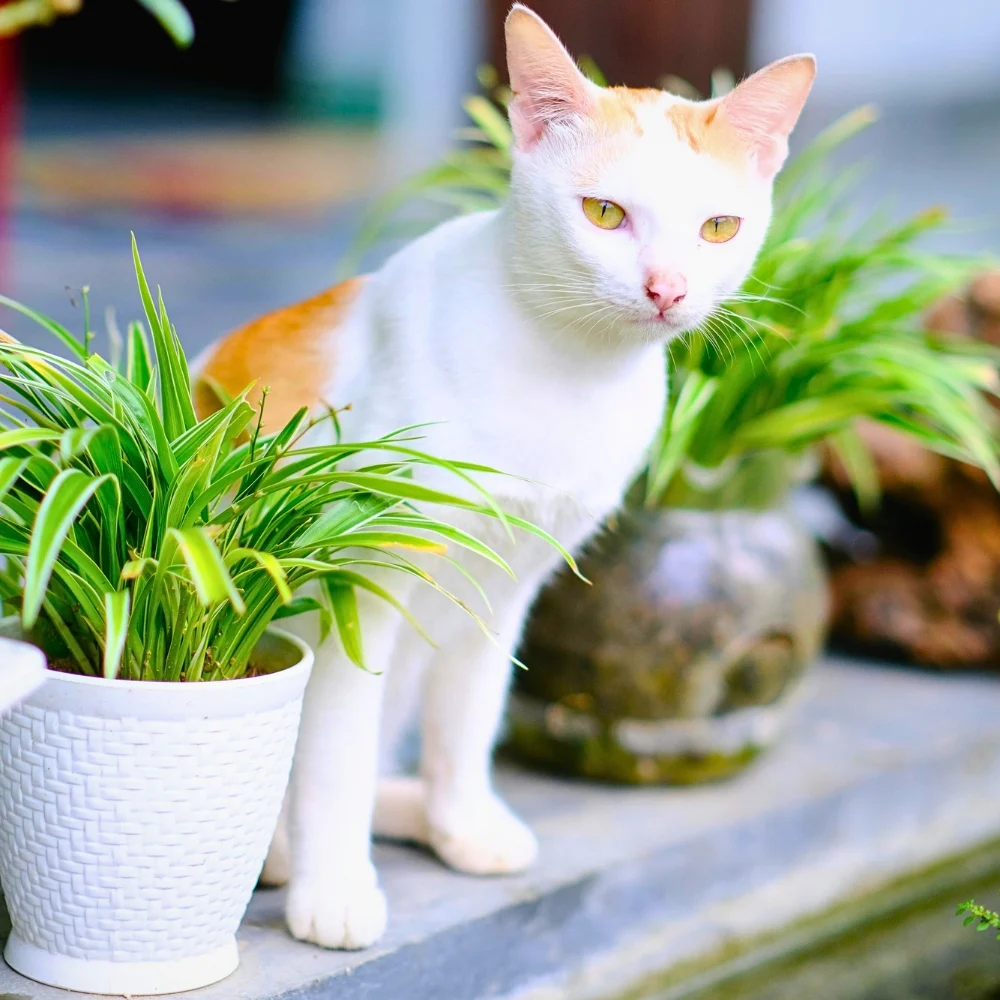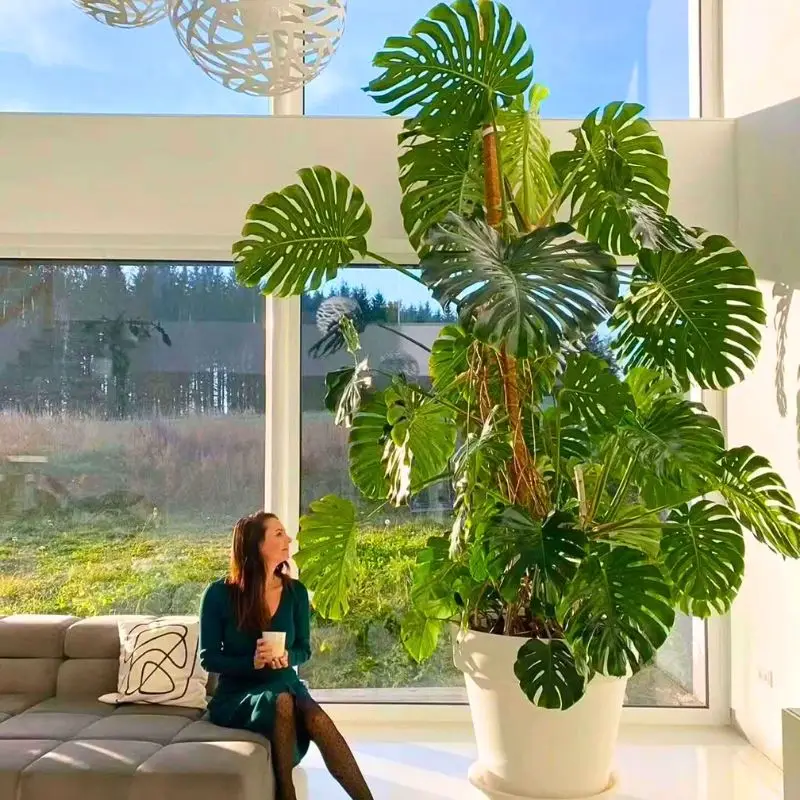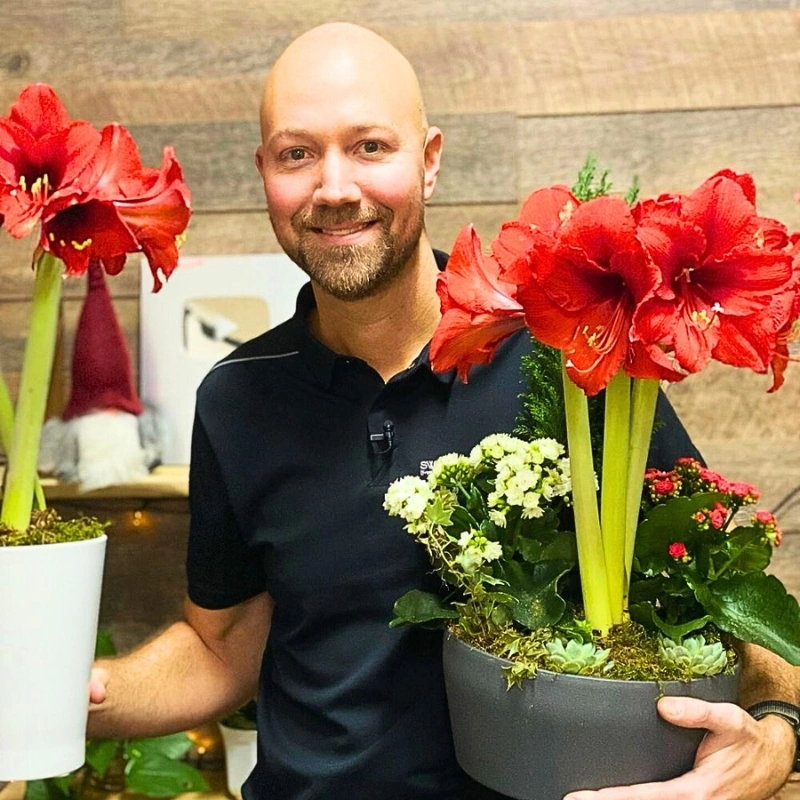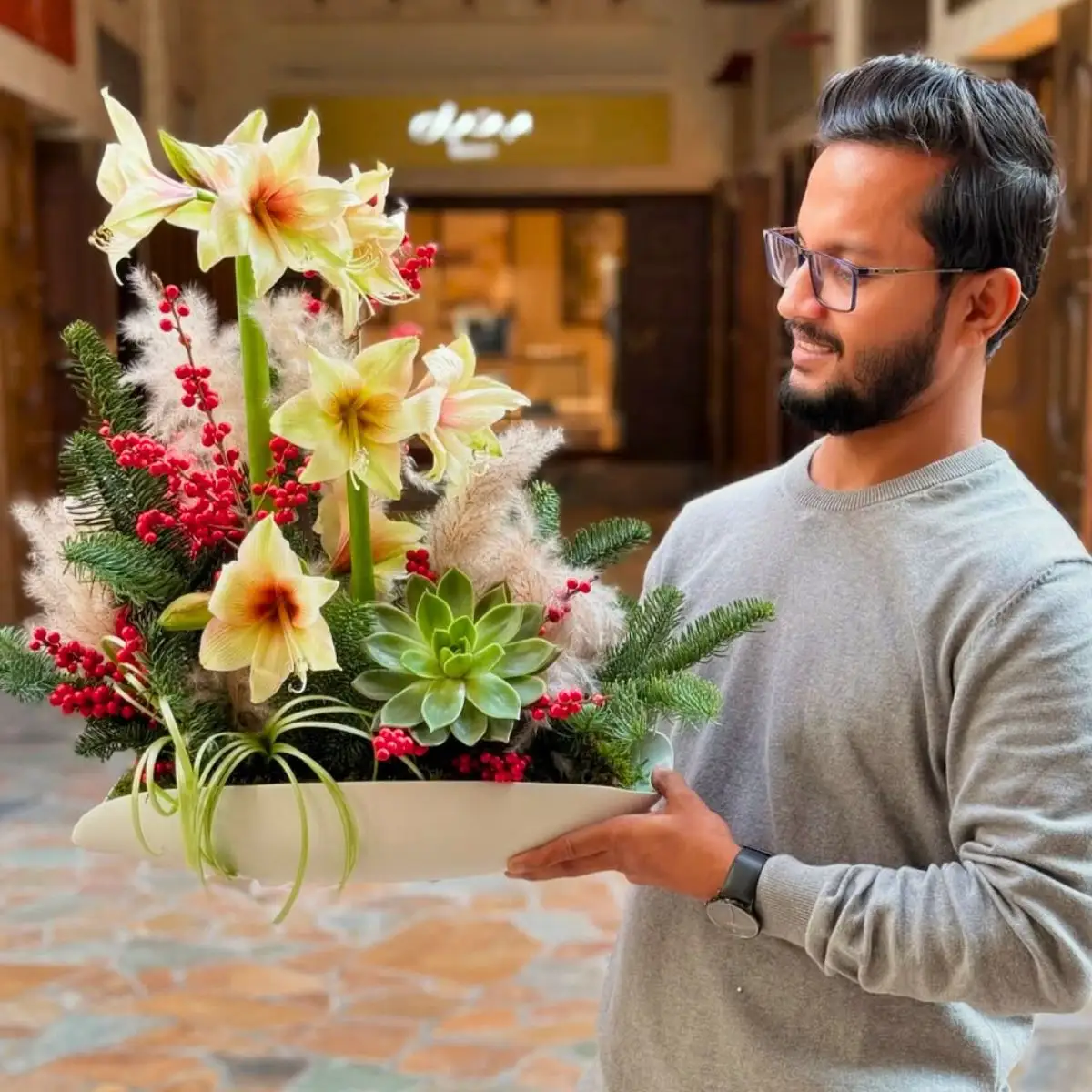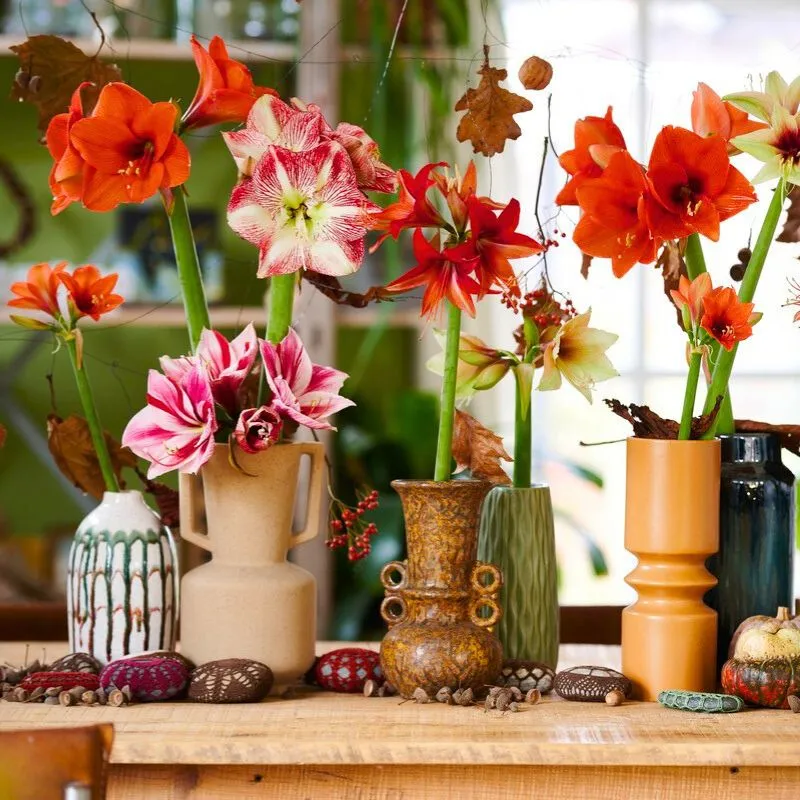Visiting a friend's house, or perhaps, just checking out their background surroundings during a virtual call, you can't help but take notice of the all-too-familiar plant varieties nowadays. Spider plants, succulents, or Monsteras seem to be all the rage, adorning all houseplant shelves in these homes. Rare houseplants, often, seem hard to come by.
Even snake plants, Tradescantia zebrina, and Hedera helix are no longer a rare sight. Out of almost 400,000 species and counting, there are certainly thousands of other houseplant varieties from all over the world that many people hardly invest in. Though rare, these varieties are nonetheless equally appealing and may be a fascinating addition to houseplant shelves.
15 Rare Houseplants You'll Yearn For
While such traditional houseplants as African Violets and Christmas Cacti, are still quite a perfect addition to a houseplant collection, for a more comprehensive houseplant collection, one may consider investing in some rarer varieties that many people hardly think of.
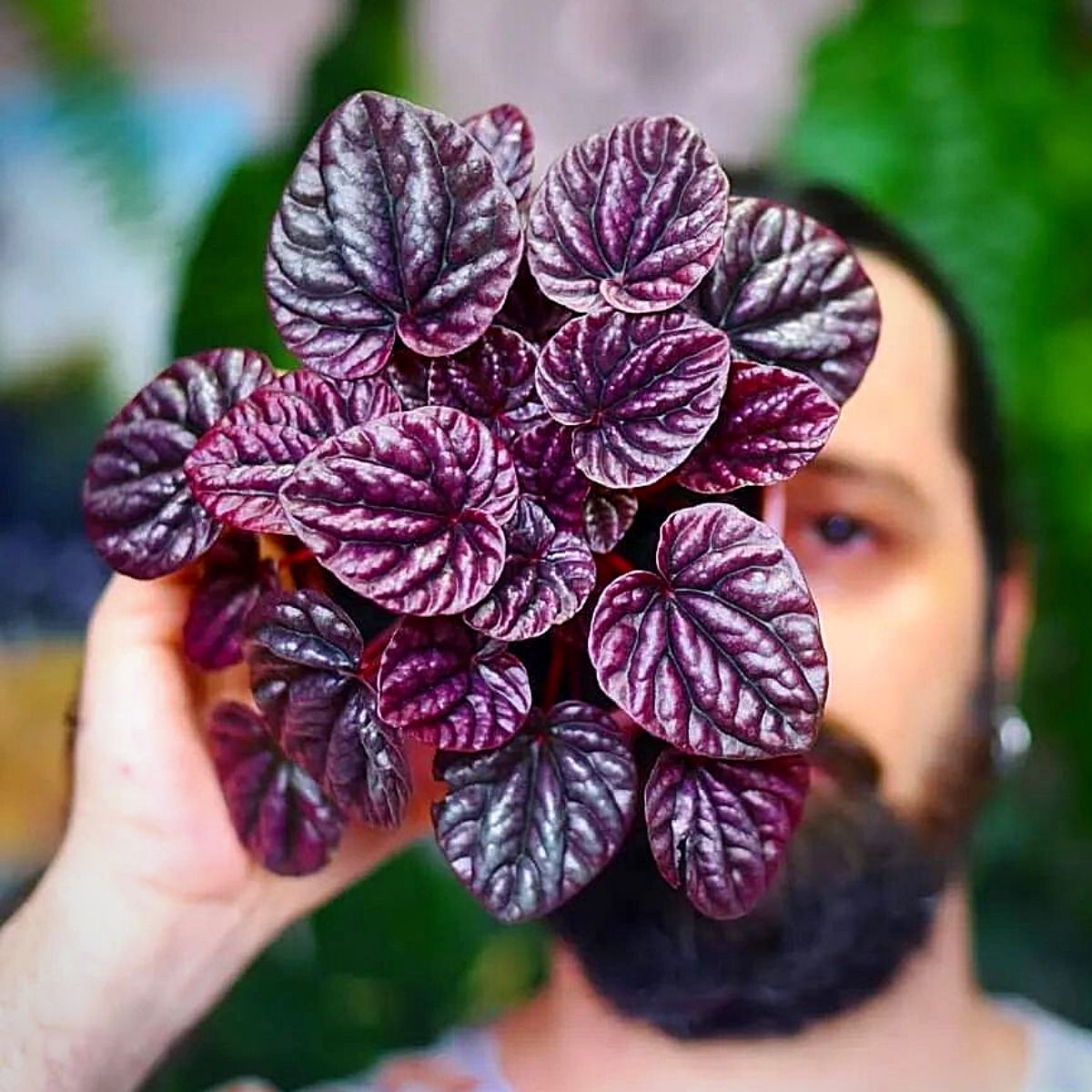
Photo by @umbotaniconoapartamento
So, here are some of those varieties that one could incorporate into their plant collection to enhance the house's aesthetics and even the inhabitants' overall well-being.
1. Mimosa Pudica
Sometimes known as the 'touch-me-not plant', this fun photosynthesizer originates from Brazil and other tropical areas. Generally, it is a woody creeping shrub, but it can also be successfully grown commercially as a houseplant. It is known for being a member of the Fabaceae (bean) family and has a pink capitulum inflorescence. While its flowers and origins may be interesting, this plant’s showstoppers are its compound leaves.
The Mimosa pudica, also commonly known as the sensitive plant or sleepy plant, is well-known for its intriguing behavior of quickly folding its leaves inward and drooping when touched, then reopening a few minutes later.
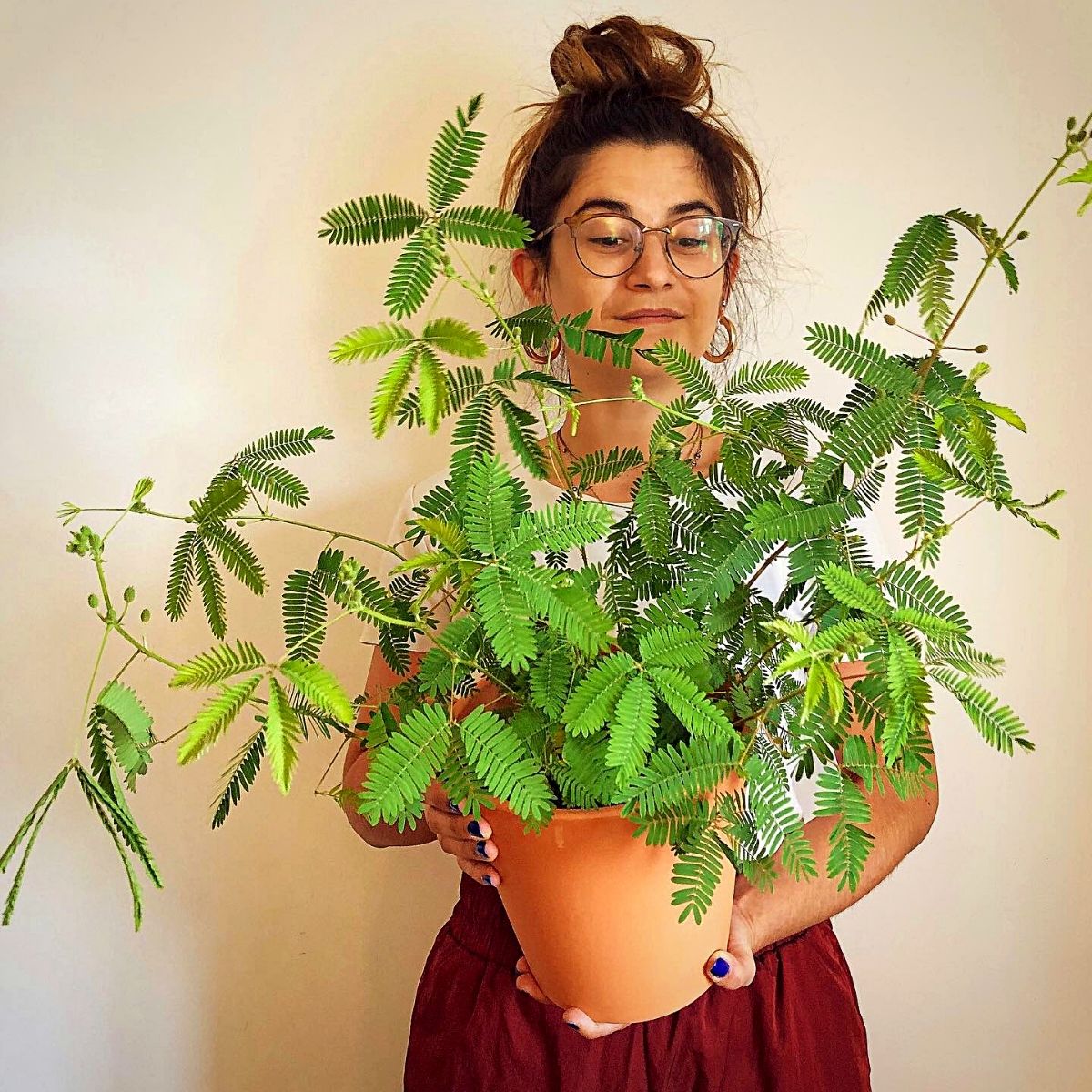
Photo by @plantitiscronica
This unique response is a defense mechanism to discourage herbivores. When stimulated, the plant rapidly transports water out of the cells in its leaves and stems, causing them to wilt. The leaves remain closed until the plant has recharged its stored energy. The plant can also respond to other stimuli, such as vibrations, temperature changes, and even electrical signals, and the rapid leaf movement is believed to be one of the fastest movement responses in the plant kingdom.
Mimosa pudica has a long history of use in traditional medicine. It has been used to treat a variety of ailments, including inflammation, and fever, and as a diuretic. The plant also has some reported analgesic and sedative properties.
The rare houseplant thrives in loam soil - and doesn't prefer to dry out - yet not to the point of soggy soil. One has the benefit of easily growing the plant by seed, and it may make an all-around great, rare attribution to a plant community.
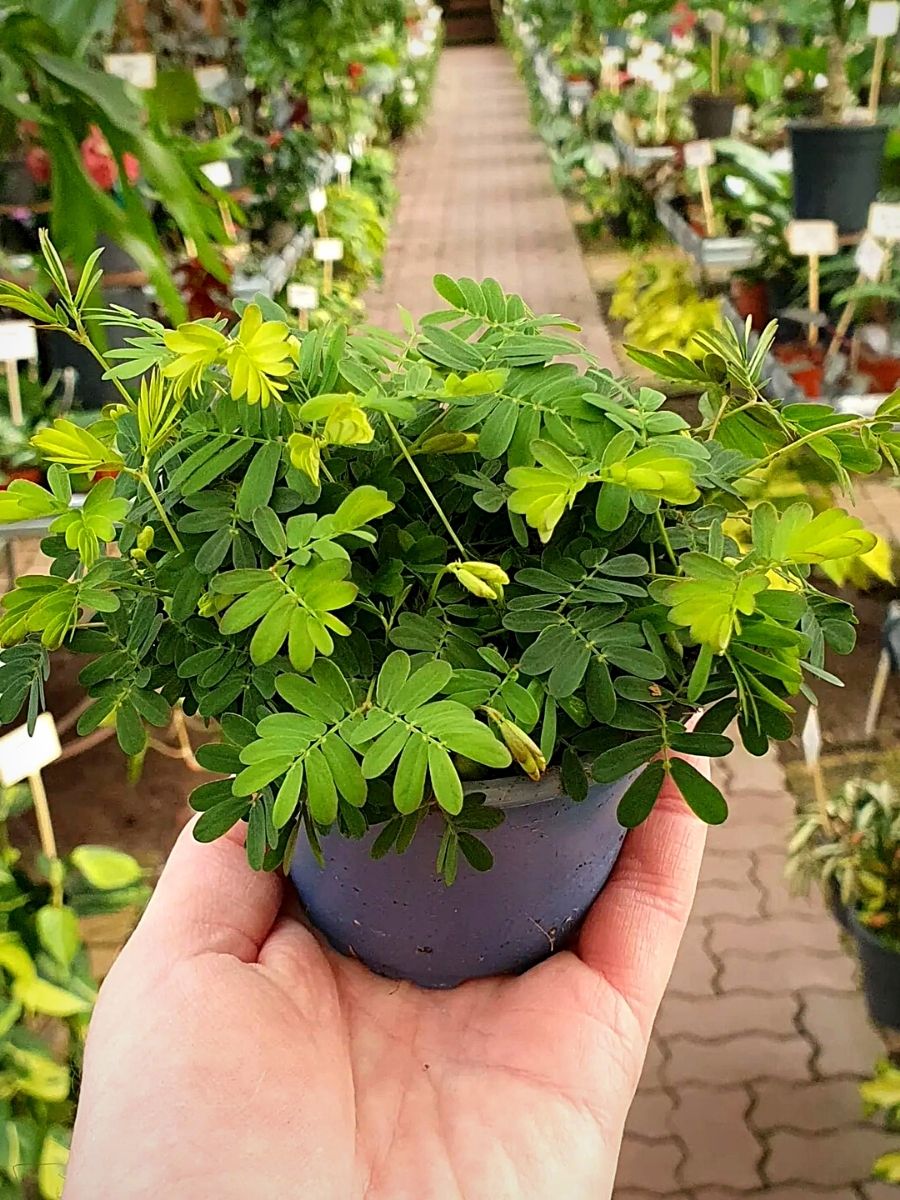
Photo by @viherpajaofficial
The plant generally needs moist loam soil, mostly direct sunlight, and a medium- to large pot size, to be effectively grown.
2. Pineapple Plant (Ananas Comosus)
The pineapple plant, scientifically known as Ananas comosus, is a tropical bromeliad that makes for a unique and eye-catching houseplant. Native to South America, this perennial plant is prized for its distinctive spiky foliage and its ability to produce a single, flavorful pineapple fruit. While growing a full-sized pineapple indoors can be challenging, pineapple plants make excellent decorative houseplants. Their sword-shaped, serrated leaves can reach up to 3 feet long and form a lush rosette.
The plants also produce striking, red-tinged flowers that develop into pineapple fruit over several months. Pineapple plants thrive in bright, indirect light and require infrequent watering - making them a relatively low-maintenance choice for the home. They prefer humid environments and well-draining soil.
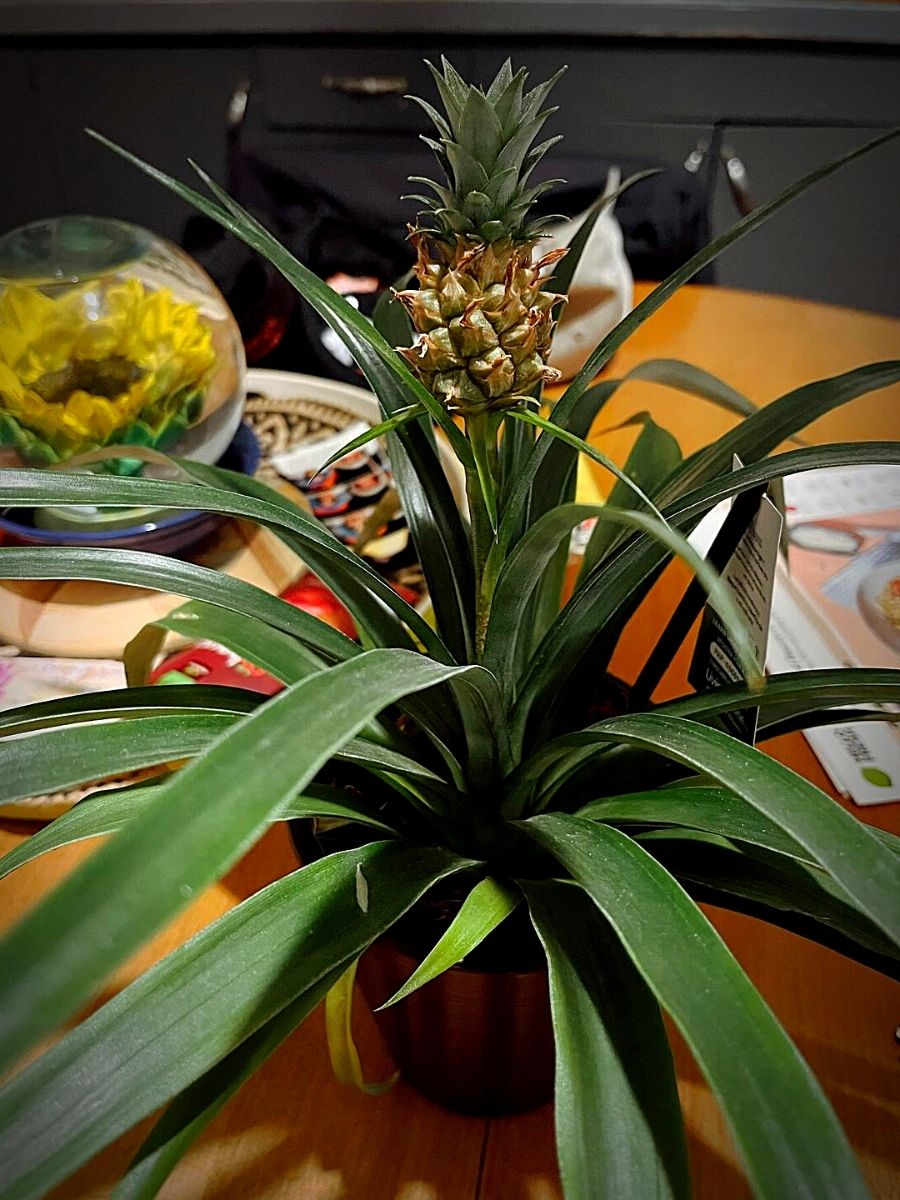
Photo by @danostyles
With the right care, a pineapple plant can live for two to three years, constantly producing new leaves and potentially yielding edible fruit. For those seeking a unique and tropical touch, the pineapple plant is a fantastic addition to any indoor space. Its spiky silhouette and fascinating growth cycle are sure to delight all plant enthusiasts.
Even so, although many pineapple plants will not produce a generous amount of fruit as rare houseplants, you may still find it fun to grow them! As far as rare houseplants go, you may be the only one on your block to have a pineapple plant! Also, note that one can root pineapple material in different soil media and water as well.
Plant Needs:
- High temperatures
- Direct sunlight
- Dry soil, do not water until it is fully dried out
- Water from the top, over the leaves
- Loam soil, possible additives for aeration, like perlite
- Medium to large pot
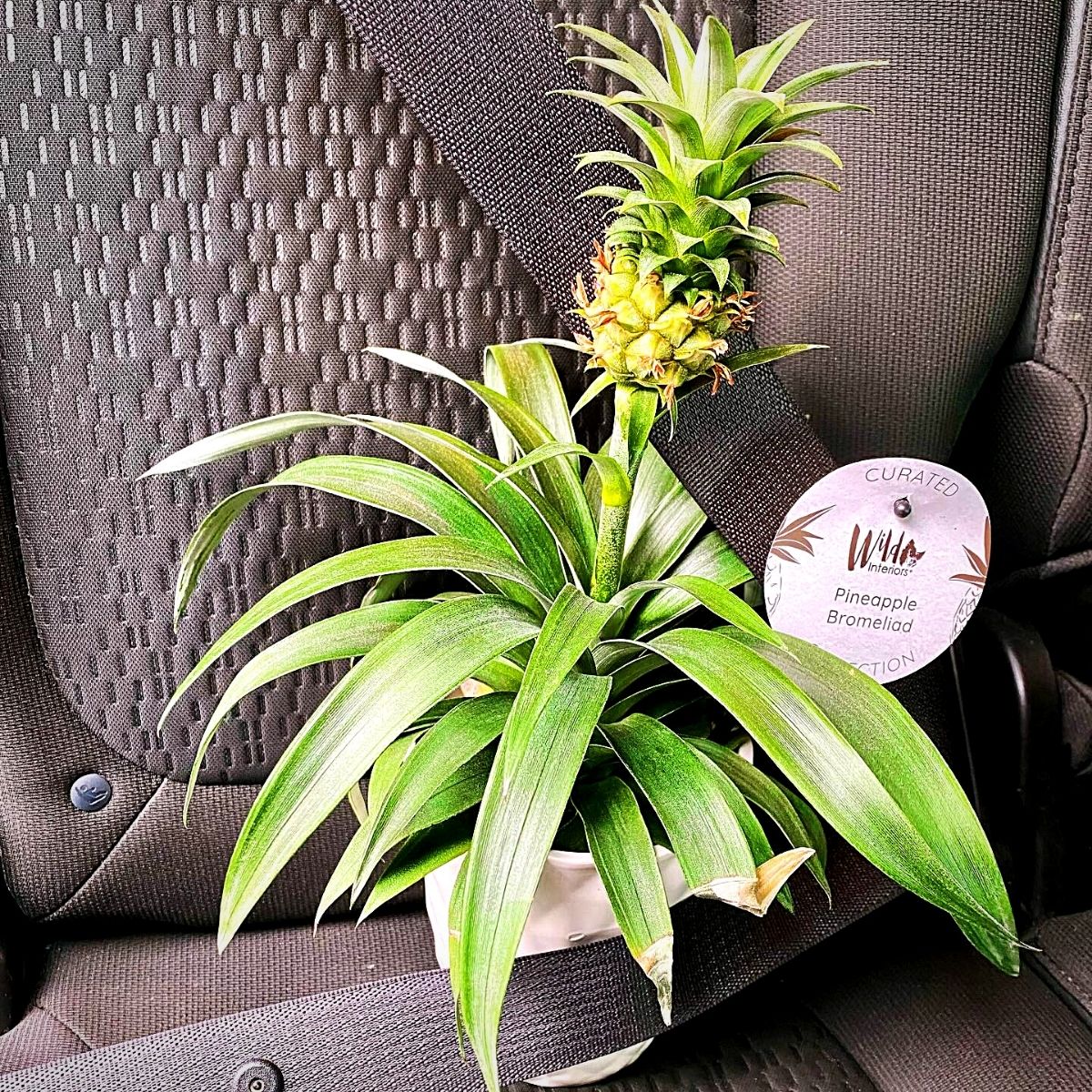
3. Lipstick Plant (Aeschynanthus)
The lipstick plant originates in Malaysia and is known as a vigorous creeping vine. The fascinating, rare houseplants are known for their tubular inflorescence. As much as we all love vegetation, flowers amongst our domesticated houseplants may have many pros. Mental health and pest management are two of the many benefits flora provides.
For this houseplant, popping red flowers is consistent if best management practices are in place. You may love this plant if you want continuous color in your sunroom. If you would acquire this rare houseplant, note that the standard soil temperature should be 70F–80F for optimal blooms. With its flaming red flowers and ability to be planted in hanging baskets, this plant can be a knockout as far as rare houseplants go.
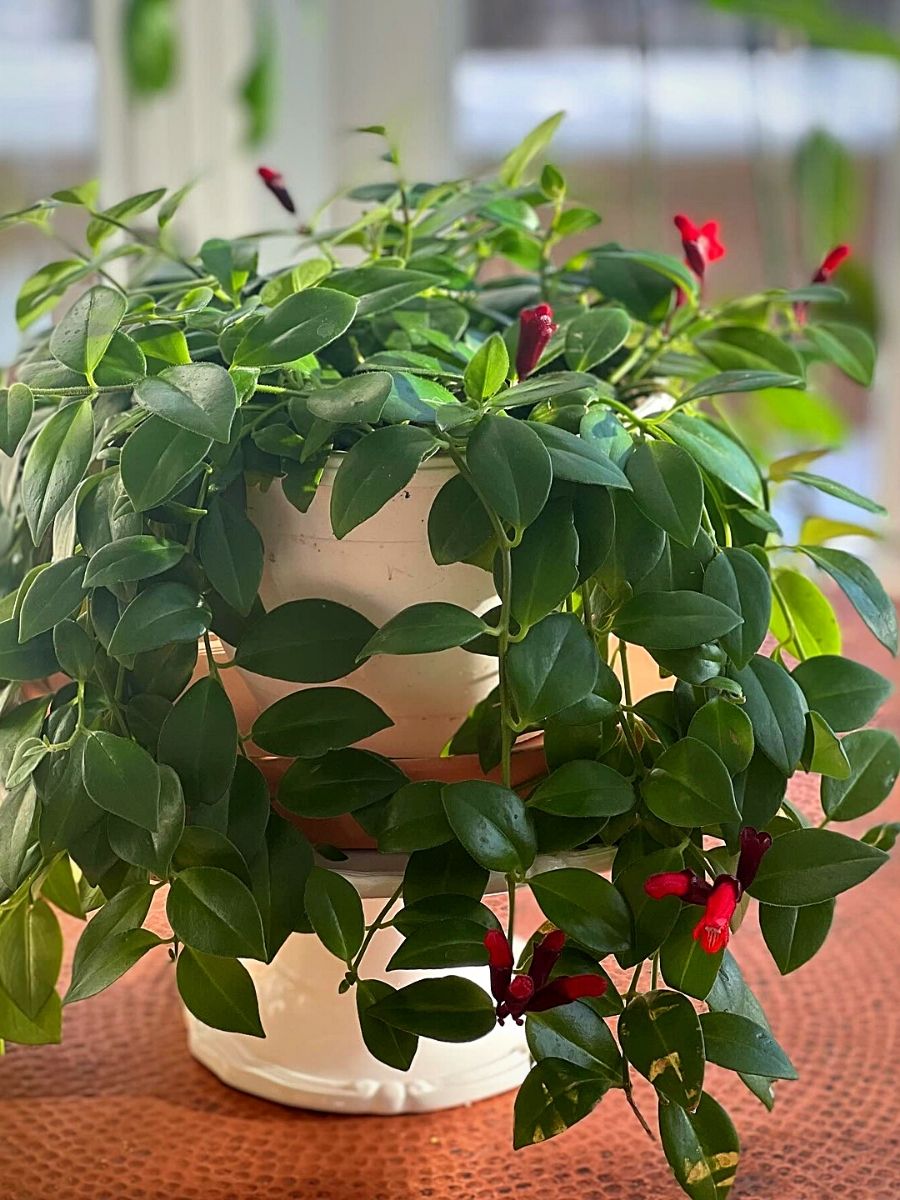
Photo by @udyana_yaksi
Plant Needs:
- 3-2-1 (N-P-K) fertilizer ratio
- Perlite for extra aeration
- Water when dry (soggy soil = death in this case)
- Needs some direct/moderate sunlight to flower
- Medium/high humidity
- Hanging planters allow for a lot of creeping but can be grown in grounded pots too
4. Prayer Plant (Maranta Leuconeura)
This is yet another rare houseplant from South America, that is also quite a gem for your household. The pattern variegation on these houseplants is the main appeal to plant owners. At night the plant closes its leaves like praying hands. The green, pink, and white foliage of this houseplant works well for pots and hanging baskets. Essentially, prayer plants show brilliant pattern variegation on their leaves.
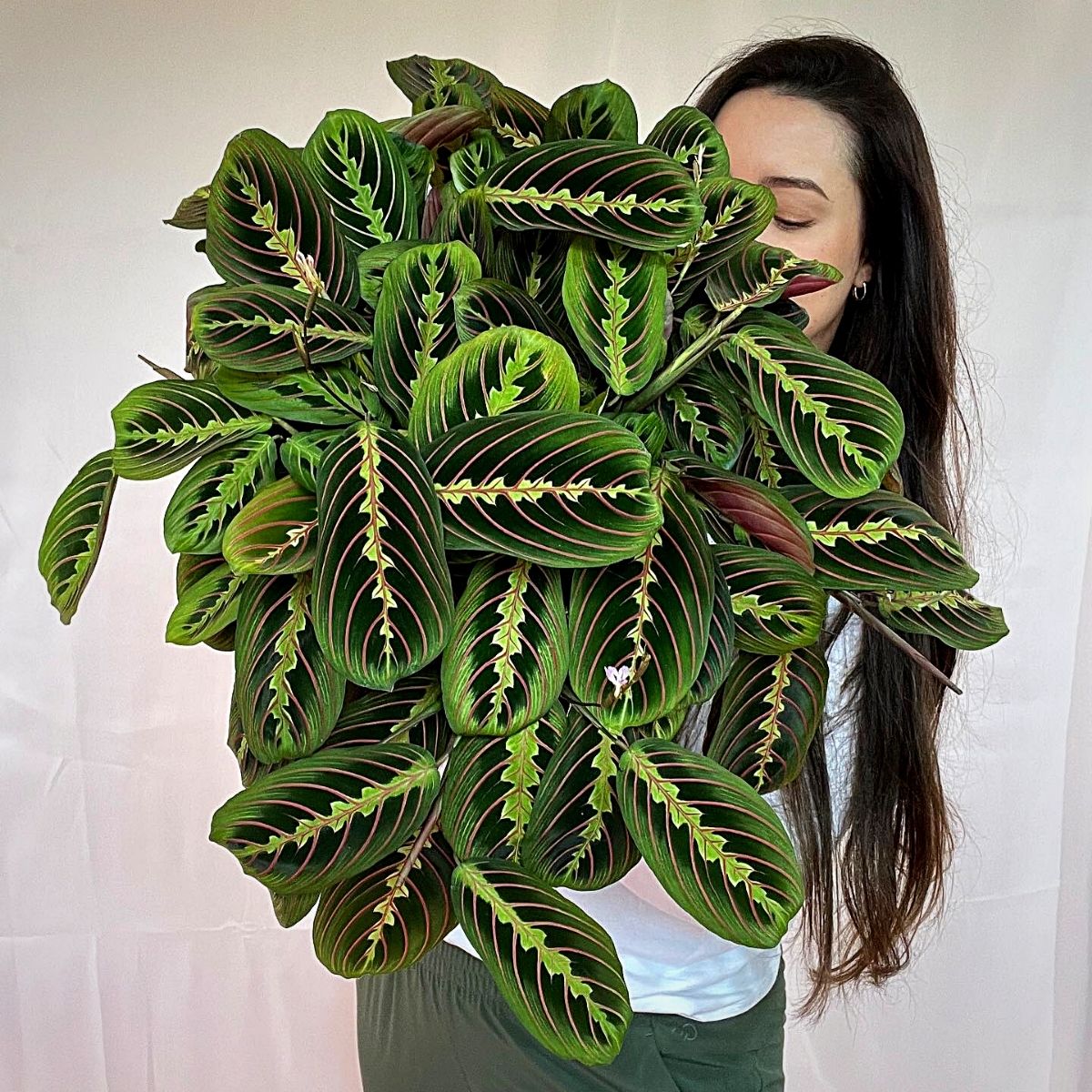
Photo by @plantsbymelissa
Plant Needs:
- Part shade
- Allow soil to dry out before watering again
- Additional humidity
5. Spanish Moss (Tillandsia Usneoides)
These may be rare houseplants to some, but for those who live in places such as Florida, these air plants can be considered invasive. Air plants are epiphytes; therefore, they form a commensalistic relationship with other plants; they grow on others. Epiphytes obtain their needs, such as water and nutrients, through the atmosphere.
Running out of space for your houseplants is no longer an issue with this plant! Mist it with warm water twice every week and allow it to fully dry out before watering. If you accidentally forget to water and it completely dries up, try soaking it in a pool of warm water. Overall, these plants are simple to take care of, and they add more unusual, rare houseplants to your collection.
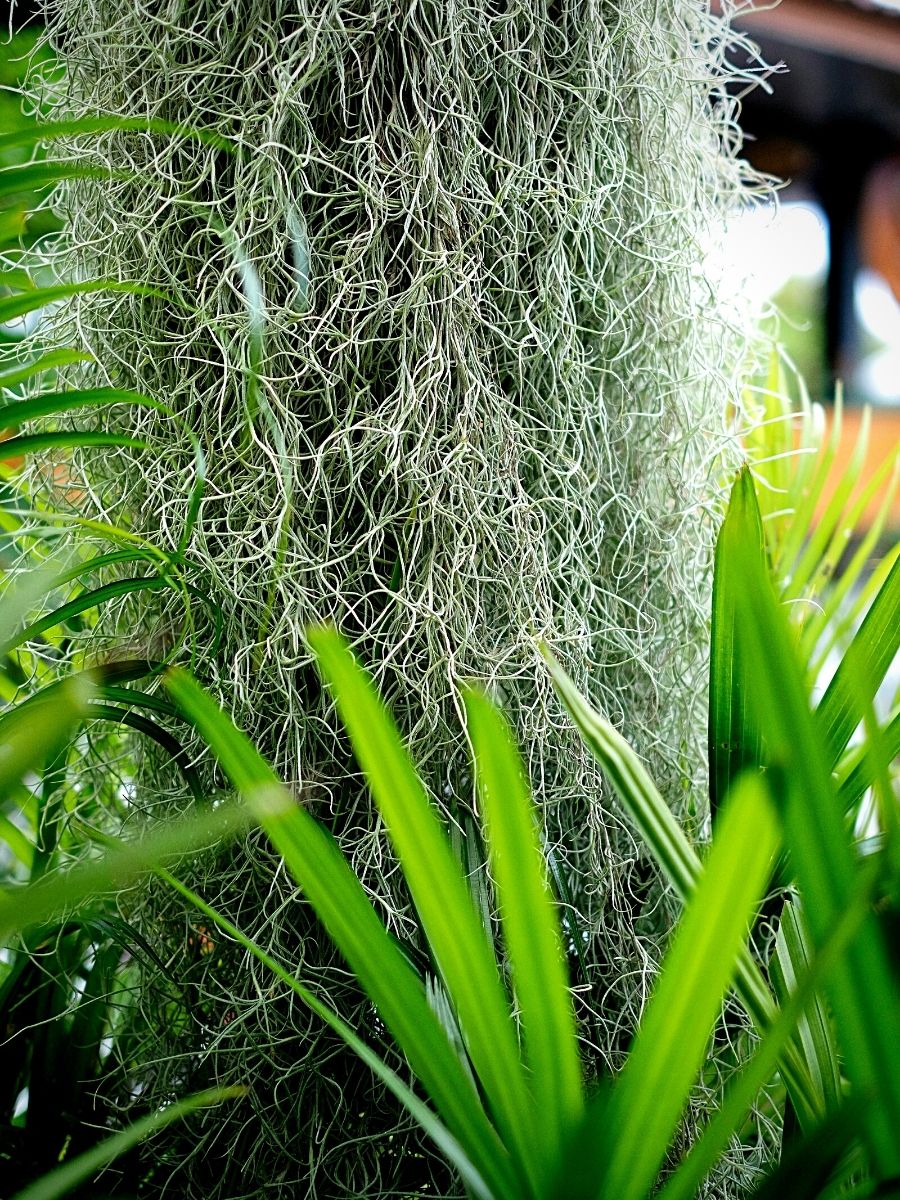
Photo by Alexey Demidov
This plant can also be beneficial if you have problems with pests in the soil, such as fungus gnats or root rot, seeing that it does not need soil. Spanish moss is also known to be widely used in the floriculture and craft industries. You will probably see it in a floral design before you do in someone’s home. As a houseplant, Spanish moss is a great plant to hang from curtains, chandeliers, or other structures because of its growth habit.
Plant Needs:
- Bright indirect light
- Mistings with filtered water
- Occasional fertilizer
- Loves humidity
6. Peperomia
If you run out of room for your rare houseplant collection, Peperomia does not take up much space and often does not need fertilization. Belonging to the family Piperaceae, the genera Peperomia is one of the largest in the family. It’s also simple to take care of and adds a fresh touch when put in a hanging basket or 10-15 cm (4-6 inch) pot.
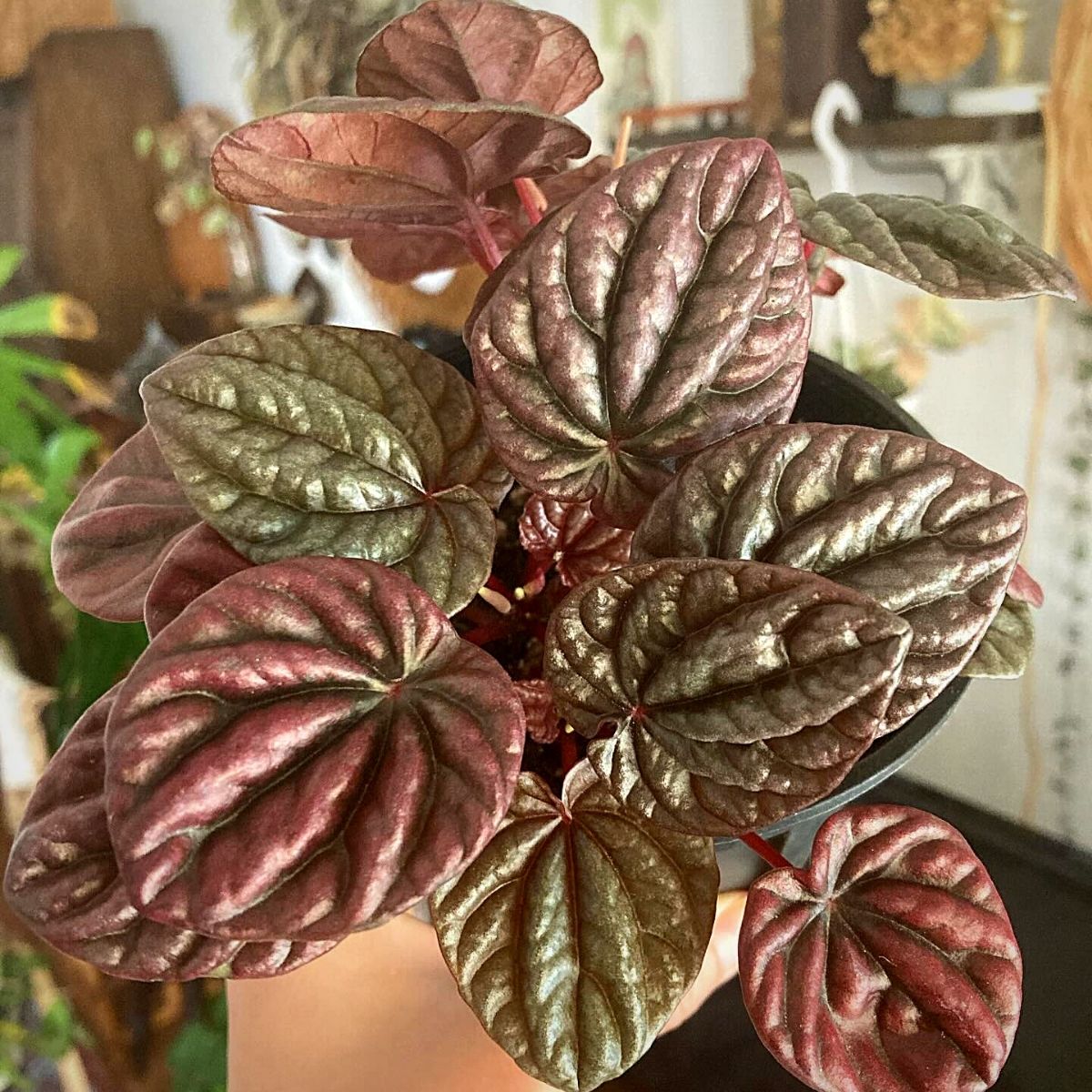
Photo by @hioka.i
The succulent-like, water-retaining leaves and stems of this plant may benefit you if you forget to water or want to go camping for a few days. Peperomia comes in many different varieties and is not difficult to take care of. Some varieties even make for a unique purple houseplant that can brighten up any space.
Plant Needs:
- Indirect light
- Water when dry
7. Lemon Balm (Melissa Officinalis)
Lemon balm, scientifically known as Melissa officinalis, is a member of the mint family that has been cherished for centuries due to its diverse array of uses. This perennial herb, native to the Mediterranean region, is renowned for its distinct lemon-like aroma and flavor, which have made it a staple in kitchens and gardens around the world. Other than its culinary applications, lemon balm has long been celebrated for its potential health benefits.
The leaves of this herb are rich in beneficial compounds, including citronellal, geraniol, and citral, which are believed to possess calming, antioxidant, and anti-inflammatory properties. Traditional medicine has often utilized lemon balm for its ability to soothe anxiety, improve sleep, and even potentially support cognitive function.
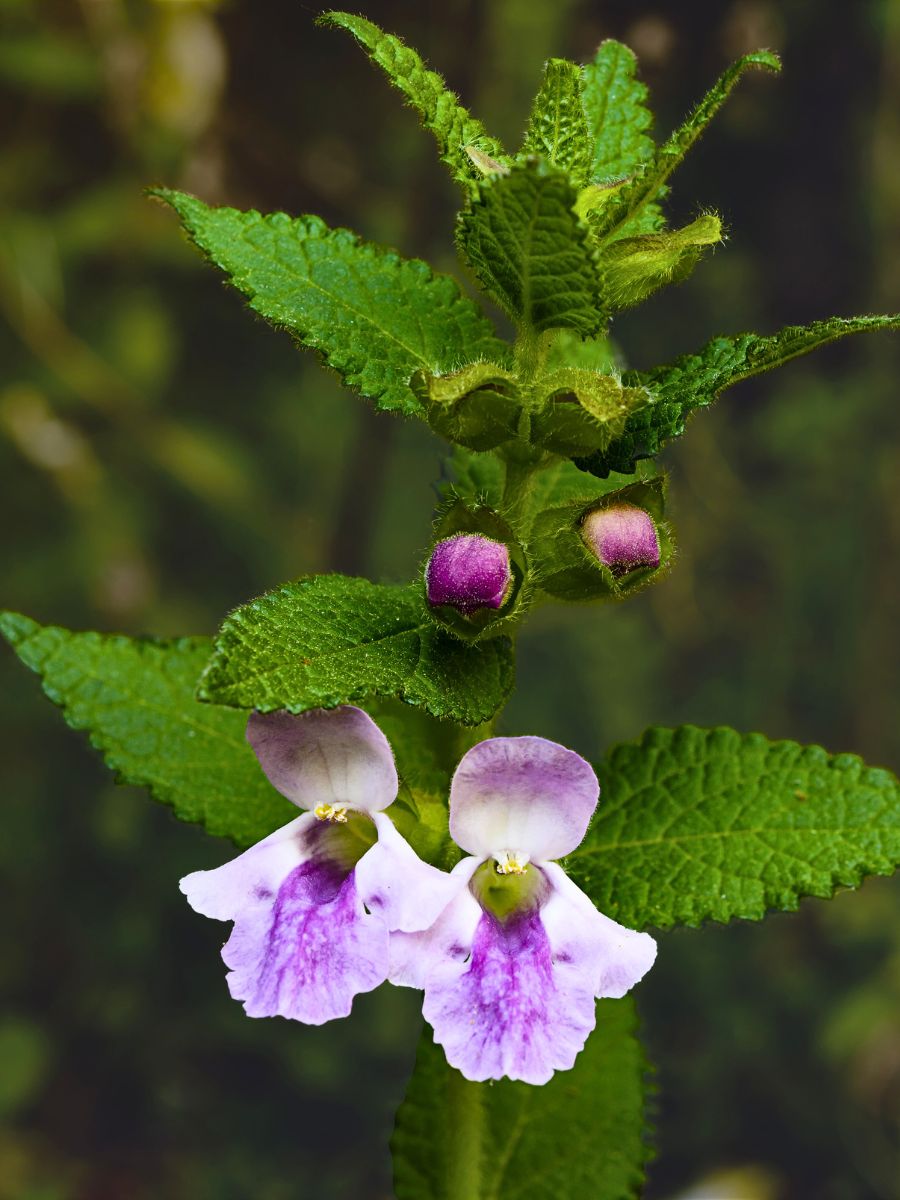
Photo by siala
In the kitchen, lemon balm's versatility shines. The fresh or dried leaves can be used to impart a subtle, refreshing flavor to a variety of dishes, from teas and cocktails to salads and pesto. The herb also pairs beautifully with fish, poultry, and dairy products, adding a delightful twist to both savory and sweet recipes.
Likewise, this herb's essential oil - extracted from the leaves - is often used in lotions, creams, and diffusers, with its calming scent and potential skin-soothing properties making it a popular choice among those seeking natural self-care solutions.
You may love this plant if you forget to water it or do not have every day to spend with your houseplants. It is very resistant and will spring back to life even if it is wilted beyond belief. Not to mention, if you would like to retire this rare houseplant, you can plant it in your flower beds. Be careful, though, because members of the mint family can become invasive. As an indoor and outdoor plant, lemon balm goes dormant until spring.
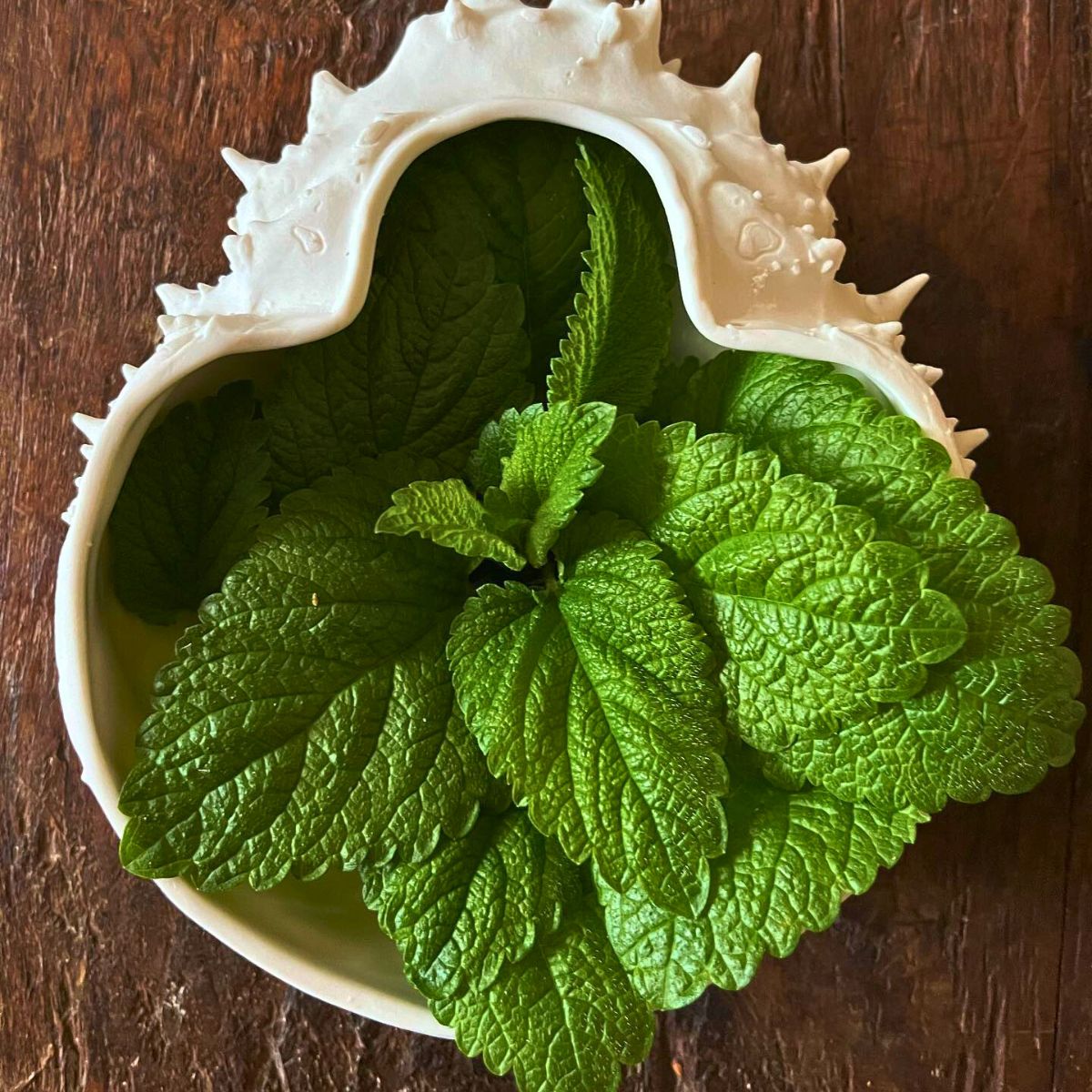
Photo by @athena_poilane
Trimming these houseplants to obtain the desired shape can also be a fun plant activity to do, and it prevents them from becoming sprawled out and all over the place. Sharing this plant with others is always fun as well!
Plant Needs:
- Direct sunlight
- Water when dry
- Fertilize in the Spring
- Occasional plant trimming
8. Eucalyptus (Eucalyptus Globulus)
To koalas, these plants may not be unusual, but for many people around the world, they can be considered rare houseplants! This houseplant, to some, is difficult to grow from seed. The seeds are teeny-tiny and can be very picky. But you can grow this plant indoors as long as you have the correct lighting and heat source. You could immensely benefit from it because it has a myriad of physical and mental health purposes.
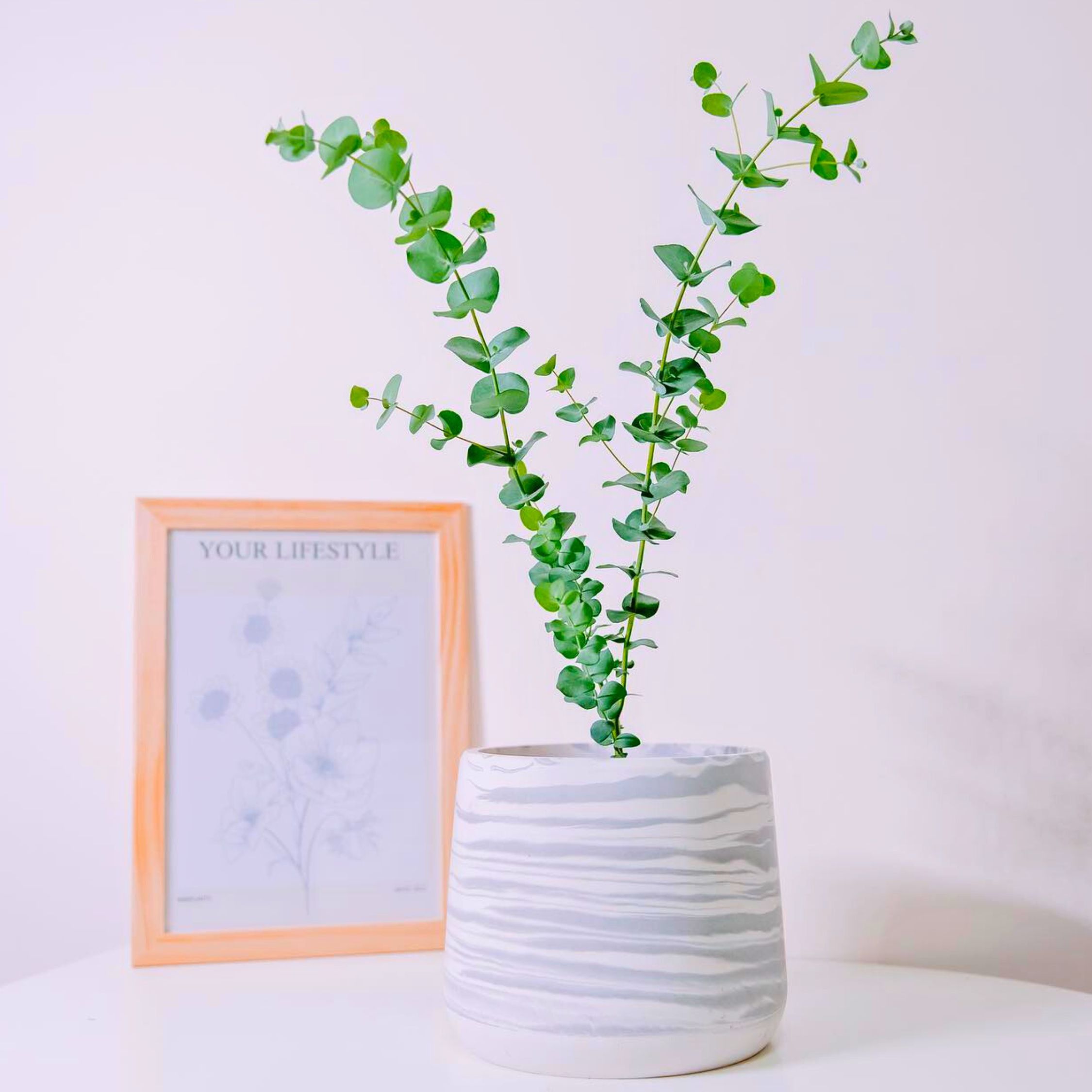
Photo by @niniplants.tw
For starters, while towering, silver-green eucalyptus trees are a quintessential sight in many parts of the world, these aromatic giants are not typically associated with indoor living. However, a select variety of this remarkable plant, Eucalyptus globulus, has found a surprising new home - as a rare and captivating houseplant. Eucalyptus globulus, also known as Tasmanian blue gum, is a species of the Eucalyptus genus that is particularly well-suited for container cultivation.
Unlike its larger counterparts, this variety can thrive in the confines of a pot, making it an intriguing option for those seeking to bring a touch of the outdoors into their living spaces. One of the primary appeals of the eucalyptus houseplant is its distinctive and refreshing aroma. The plant's leaves, when crushed or brushed against, release a nice scent that is often described as a blend of menthol, citrus, and a hint of camphor. This fragrance not only adds a natural, revitalizing element to a room but is also believed to have potential benefits for respiratory health and mental well-being.
Aside from its aromatic qualities, the eucalyptus houseplant also offers a striking visual appeal. The plant's silvery-blue foliage and slender, graceful stems create a captivating contrast against the typically verdant indoor landscape. Furthermore, the eucalyptus plant's resilience and adaptability make it a low-maintenance option for even the most novice indoor gardeners.
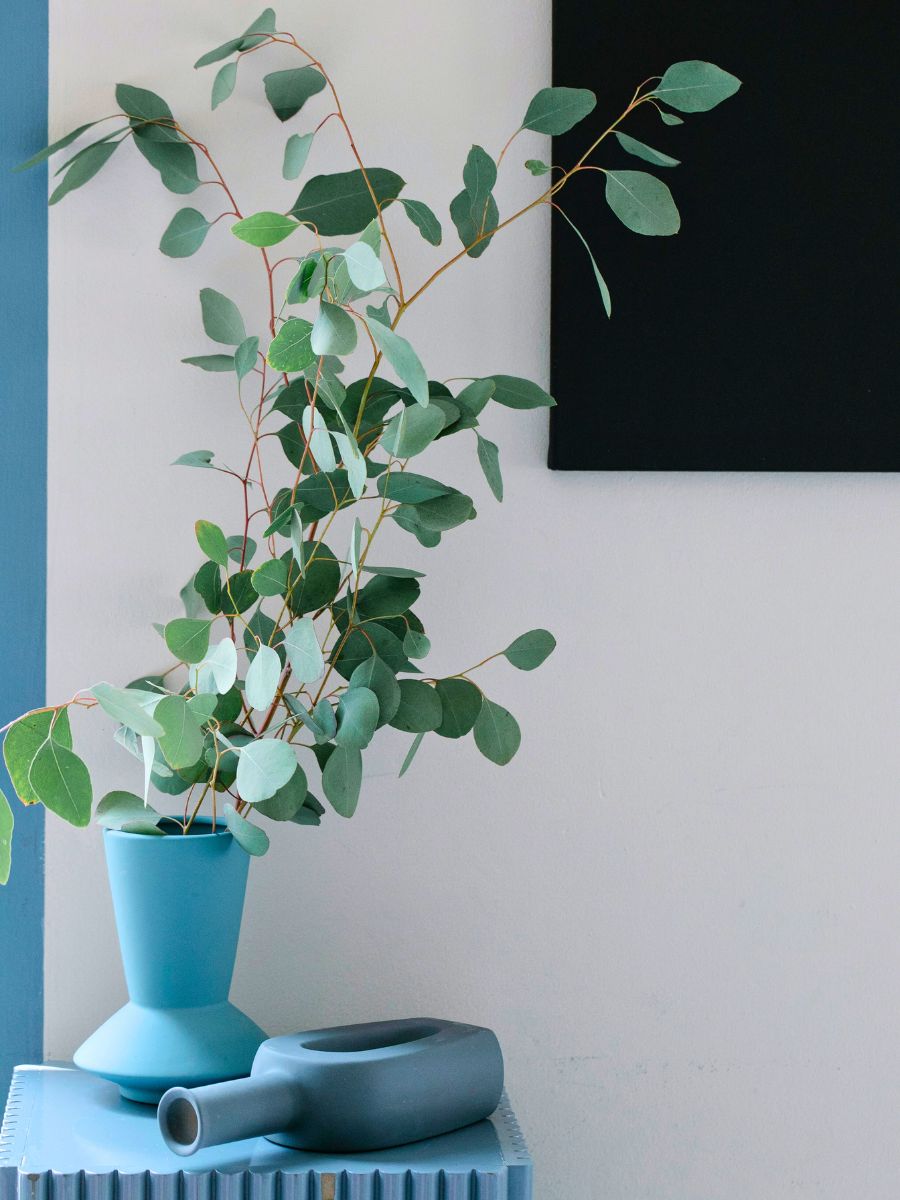
Photo by Angela Roma
This houseplant, essentially, offers a refreshing and rejuvenating touch to any indoor space. Having this aromatic, visually stunning plant in their home means homeowners can experience the restorative power of nature, even in the most urban of environments.
Plant Needs:
- Direct light
- Plenty of room (can reach 2 meters indoors)
- Allow soil to dry out between waterings
- Fertilize regularly
- Keep away from koalas
9. Patchouli (Pogostemon Cablin)
If you rewind sixty years, these would not be considered rare houseplants, but instead one of the most iconic scents of that decade! The peace culture of the 1960s used this plant very frequently due to its powerful scent. The plant has been around for centuries and has also been used for medicinal purposes across the globe.
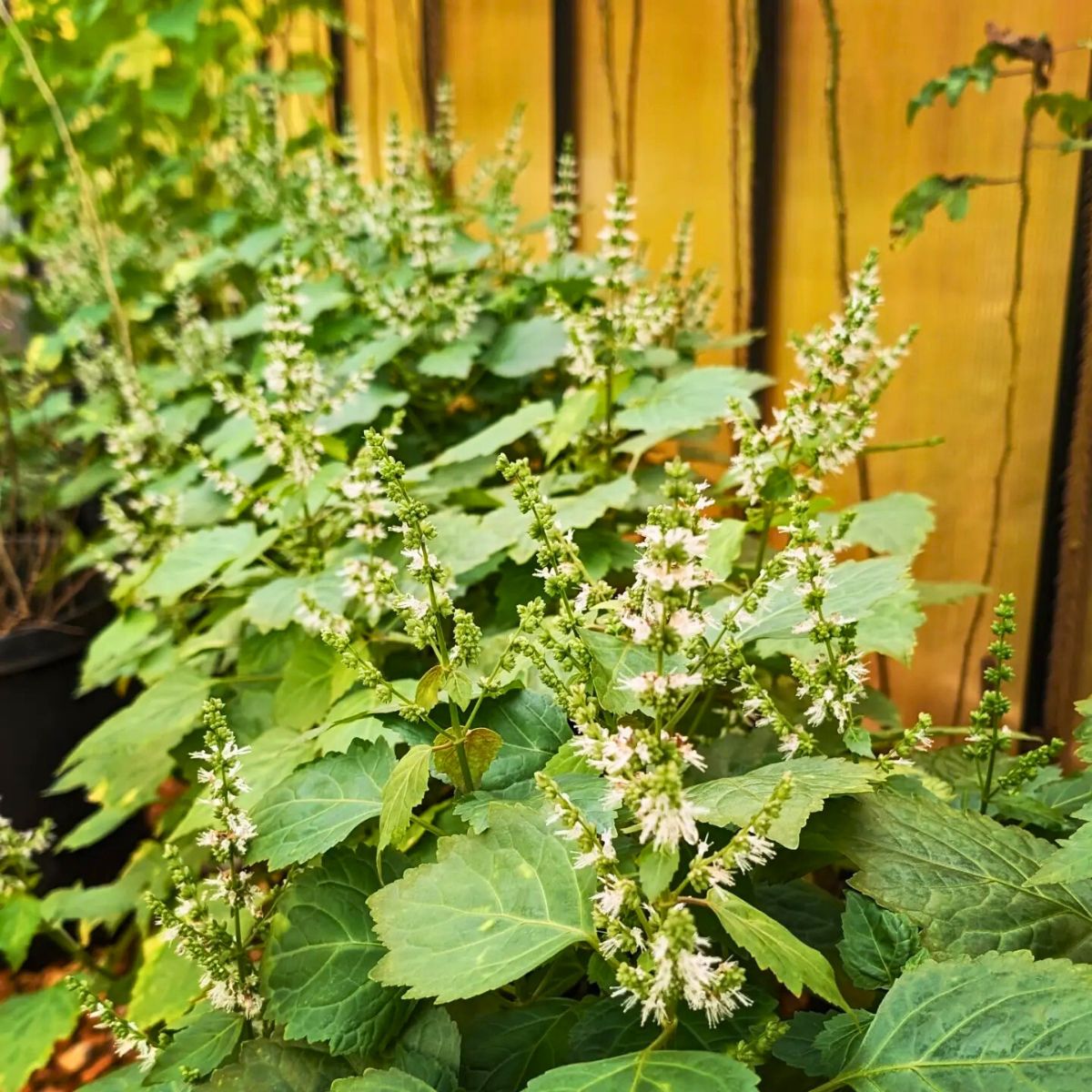
Photo by @poisonplantwitchery
Hailing from the tropical regions of Asia, this lush, bushy plant has long been revered for its distinctive, earthy fragrance that has permeated through cultures and centuries. The houseplant is resilient and adaptable and thrives in a variety of indoor environments. Its broad, velvety leaves and compact, bushy growth habit make it an ideal choice for those seeking to add a touch of natural elegance to their living spaces. Be it on a windowsill, a tabletop, or as part of a larger indoor garden, the Patchouli plant quickly becomes a focal point.
The true delight of the houseplant, however, lies in its charming scent. As the leaves are brushed or crushed, they release a complex, earthy aroma that is both soothing and invigorating. This distinctive fragrance has made Patchouli a staple in the world of aromatherapy, with its calming and grounding properties often used to promote relaxation and well-being. The Patchouli scent has also found a prominent place in the perfume and incense industries, lending its unique character to a wide array of products.
For those seeking to bring a touch of the exotic into their homes, then this houseplant offers a truly enchanting experience. Its lush foliage, resilient nature, and sweet fragrance make it a standout choice among the diverse array of houseplants available.
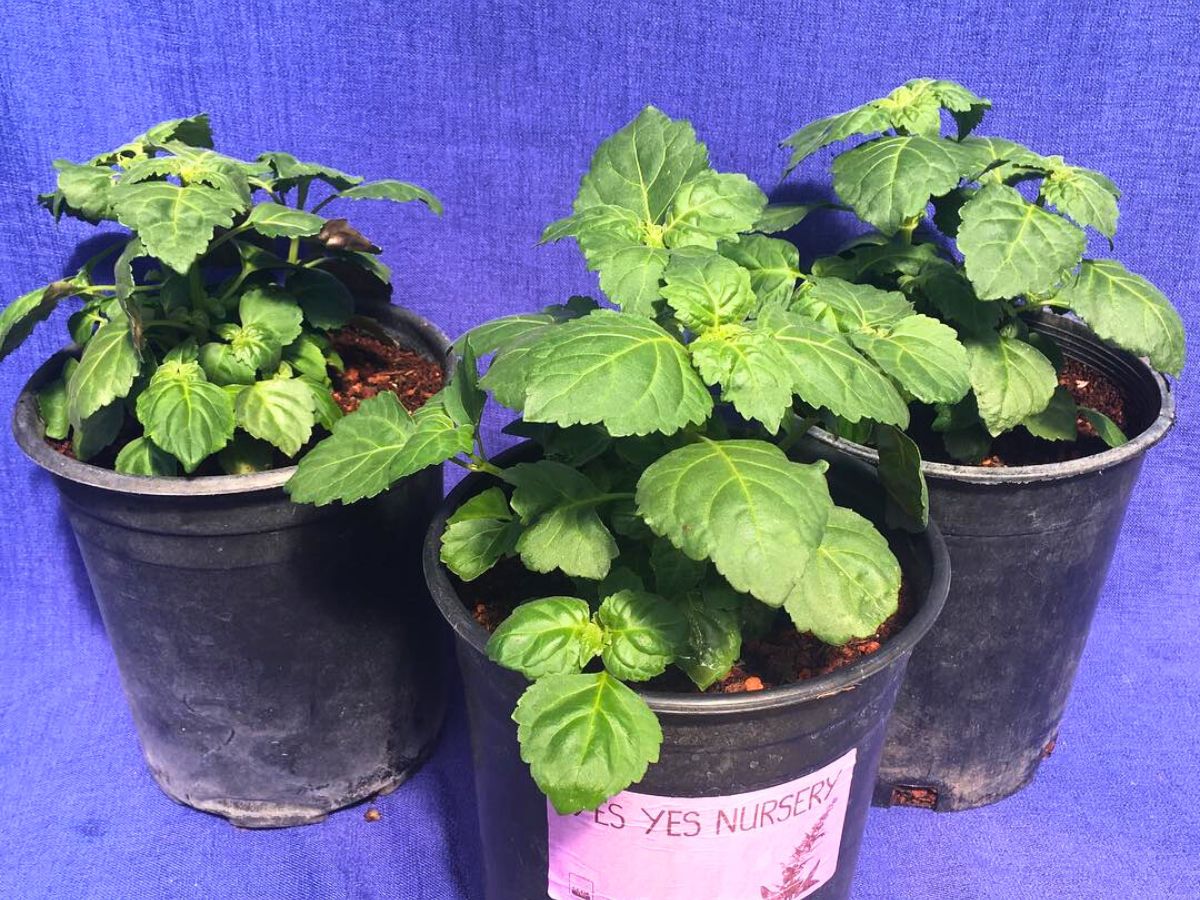
Photo by @yesyesnursery
Used as an indoor plant (as part of the mint family) your friends may be wowed when they see these houseplants in your home, for usually, people see it most commonly sold as essential oils.
While it may be challenging to grow this houseplant from seed (and generally most plants in the mint family due to their small seed size) it is certainly not impossible to grow it from seedling to maturity if you cater to specific light and temperature conditions.
Like lemon balm, the plant goes dormant in the winter, and trimming can help create the shape you have in mind. Resistance runs in the mint family, so you won’t have to worry as much (with mature houseplants) if you miss or misread your plant watering schedule for the week. Even though there is some drought tolerance, you have to water the plant (often with mint members) because container soil does not retain as much moisture.
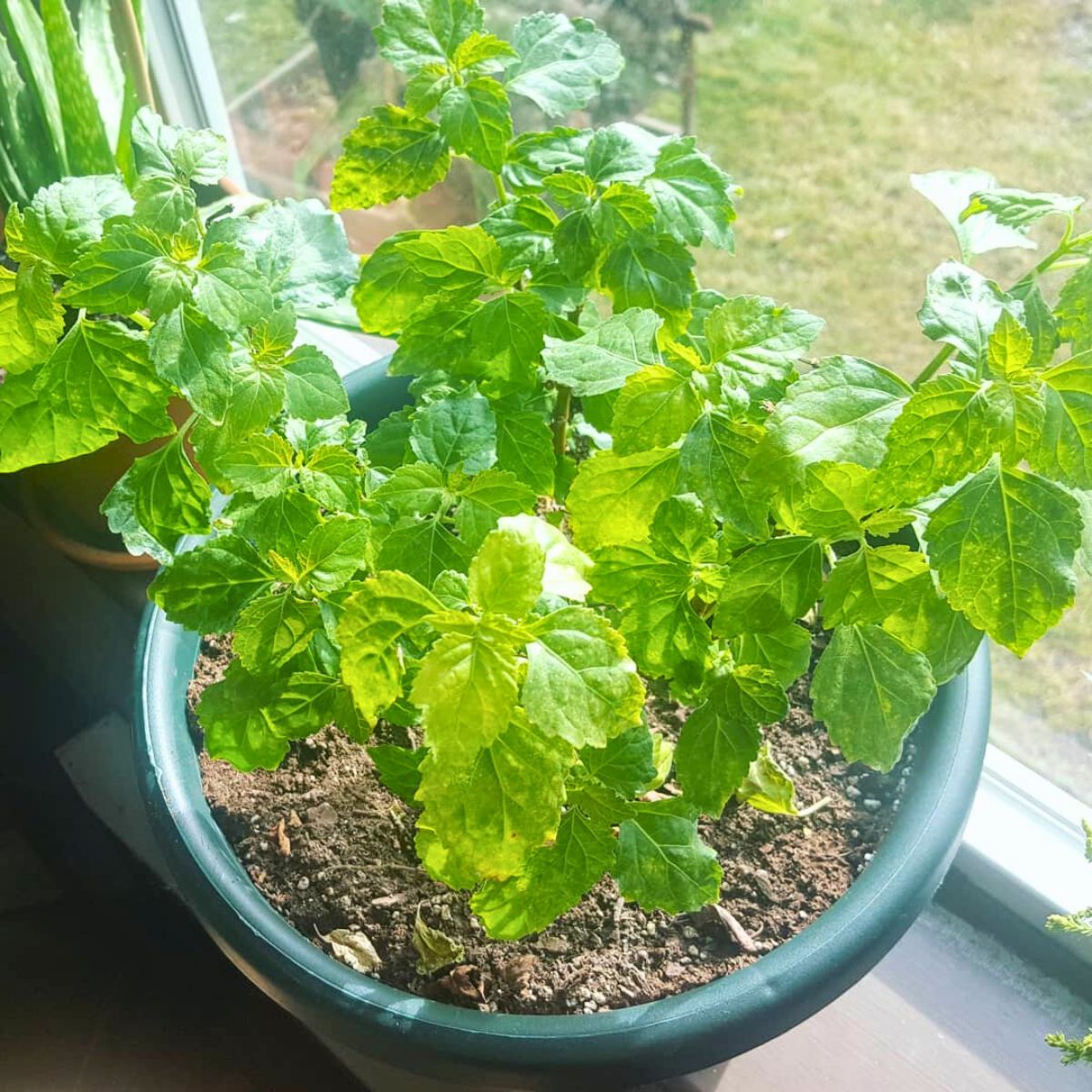
Photo by @greenladymeg
Plant Needs:
- Full sun/part shade
- Water when dry
- Fertilize in the Spring
- Occasional trimming
10. Jade (Crassula Ovata)
With succulents growing in popularity these days, Echeverias, cacti, and Aloes seem to be some of the main attractors. But jades may be exemplary rare houseplants you may be seeking amongst the hundreds of succulents.
Originating from the arid regions of South Africa, this succulent marvel has found a cherished place in homes and offices around the globe, captivating plant enthusiasts with its striking appearance and remarkable hardiness. The jade plant's appeal lies in its distinctive, thick, and glossy leaves that grow in a delightful, rounded shape. These fleshy, green leaves, often tinged with hints of red or purple, form a compact, tree-like structure that adds a touch of elegance to any indoor space.
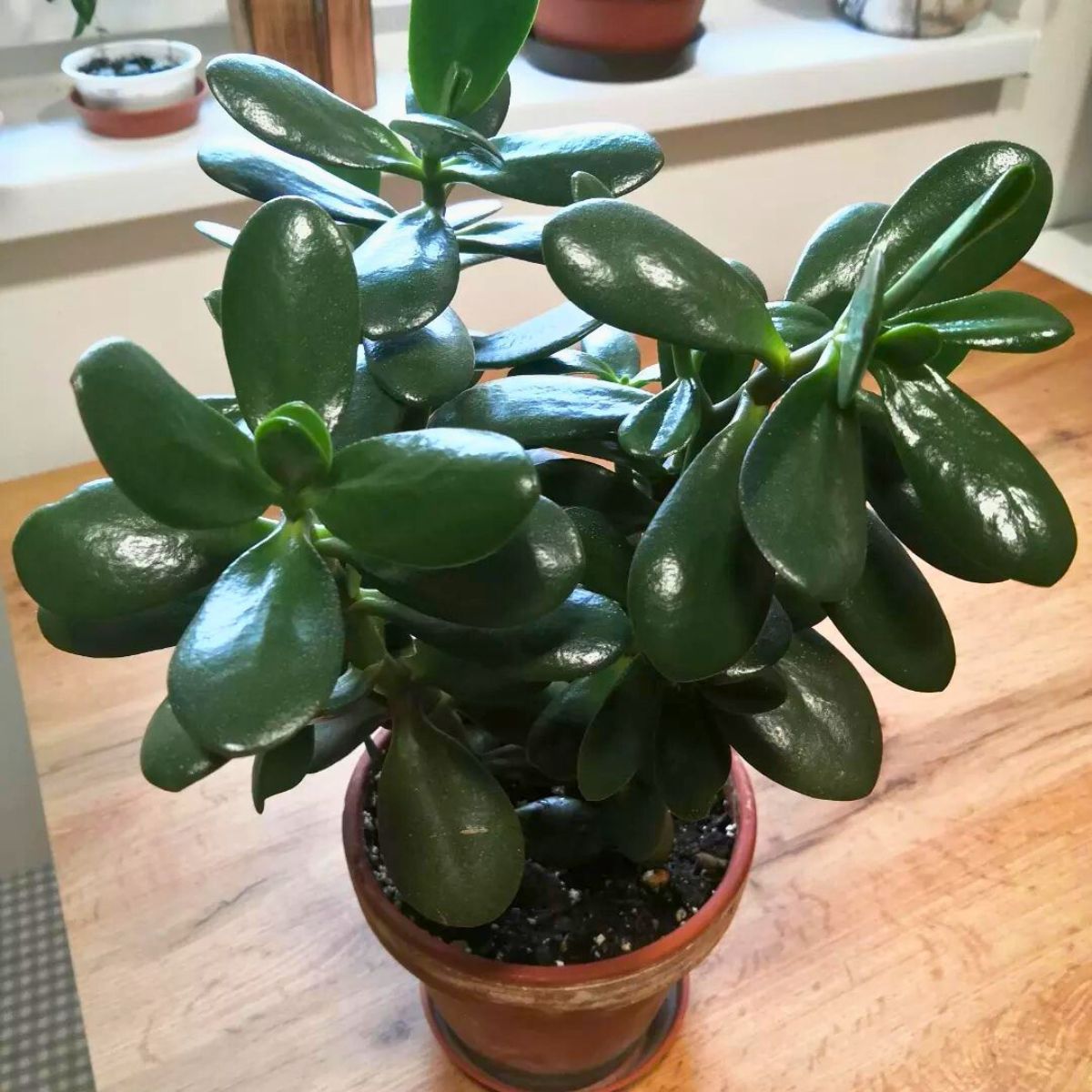
Photo by @pokojovky_s_radosti
As the plant matures, its branches can become gnarled and twisted, lending it an almost sculptural quality that is both visually striking and captivating. One of the primary reasons the jade plant has become a beloved houseplant is its exceptional ability to thrive in a variety of indoor conditions. Unlike many other plants that require specific environmental needs, the jade plant is remarkably adaptable, tolerating low light levels and sporadic watering with ease.
This resilience makes it an ideal choice for those with busy lifestyles or limited gardening experience, as the jade plant can continue to flourish with minimal attention. The Jade plant has also been imbued with cultural significance in many traditions. Often associated with good luck, prosperity, and longevity, the plant has become a symbol of these virtues, making it a popular choice for gift-giving and placement in homes and offices.
Without enough, the plants become leggy, stretched, and weak due to a lack of light and having to reach for it. If you have a direct, bright sun, you will allow these houseplants to thrive. The stems of the plant can, also, get thick and almost woody, and you may want to press and preserve the slender five-petaled inflorescence. Leaf propagation can also be easily practiced with these houseplants.
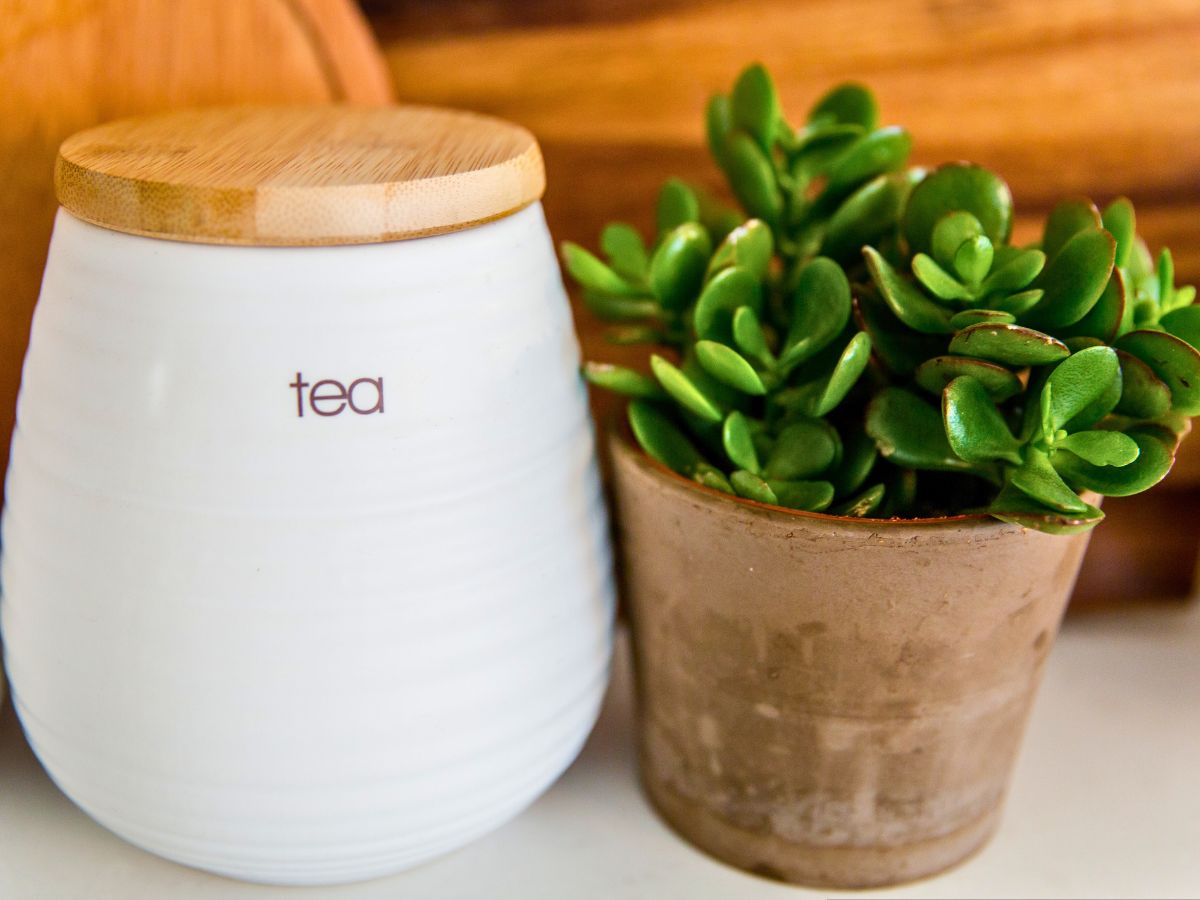
Photo by @laterjay
Even so, indoors, the pad-like leaves and slight, rare color around the leaf margins add flare to your collection.
Plant Needs:
- Soil with good drainage
- Direct light
- Water when dry
11. Tri-Color Sage (Salvia Officinalis Tricolor)
If you have animals in your home and want to add some pizzazz to your collection, you may be looking for non-toxic and rare houseplants; look no further! The colorful foliage is the main showpiece of this plant.
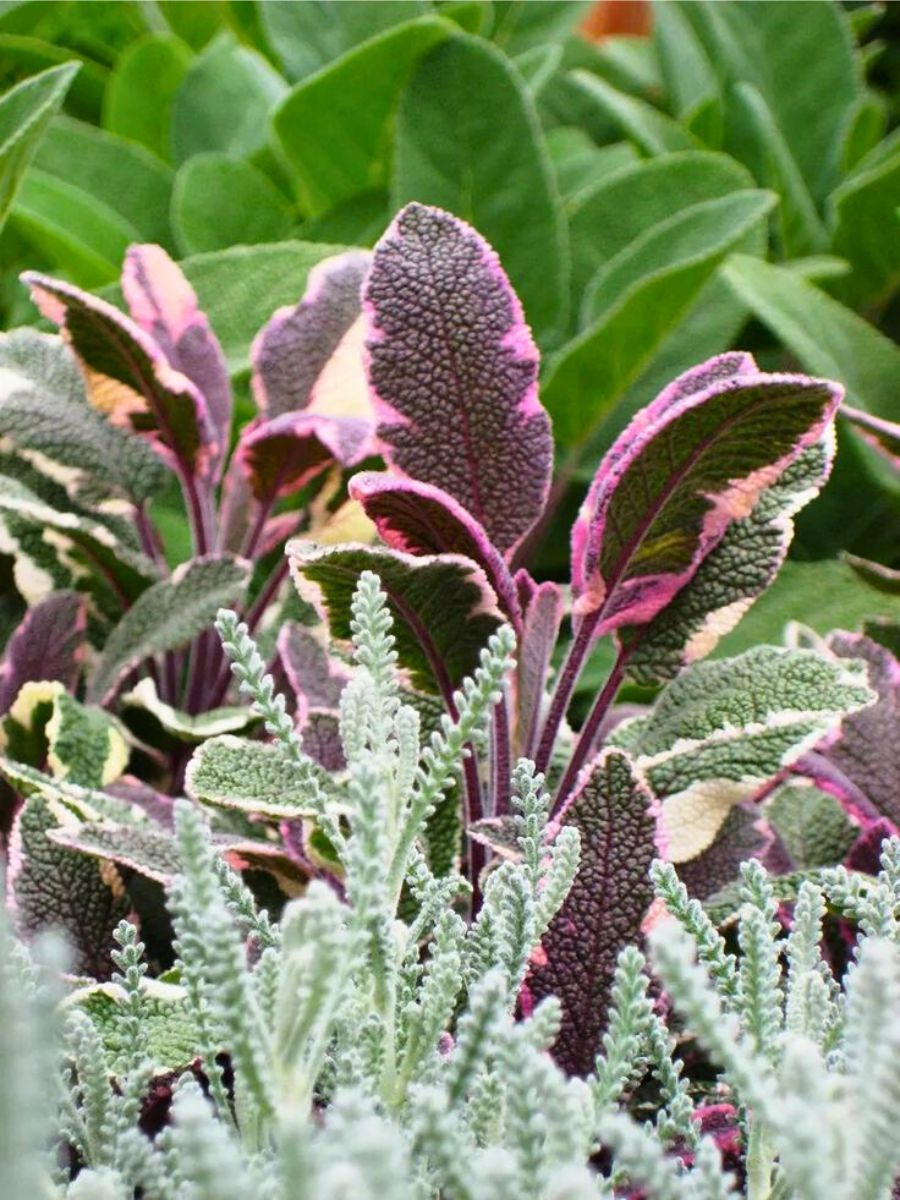
Photo by Urban Plantscapes of Dennis' 7 Dees
You may have heard of sage, for it is used regularly in the landscape and for medicinal purposes. Native Americans use it for a variety of rituals and ceremonies, and paranormal people use it occasionally to cleanse a space.
Even today, it is used in the common household for frequent spiritual cleansings, and human use dates back thousands of years, spanning many cultures. If you don’t want to use your houseplants to make sage bundles, indulging in the scent this mint member gives off can create positive energy within and around you as is.
Tri-color sage is particular when it comes to soil, for it needs to have a well-drained quality. Pruning will encourage growth, and over time you will see older growth turn woody. It is also possible you will see the plant's flower — a rare blue in the summer! If you decide to eventually transfer these houseplants outside, bees and other pollinators will love it.
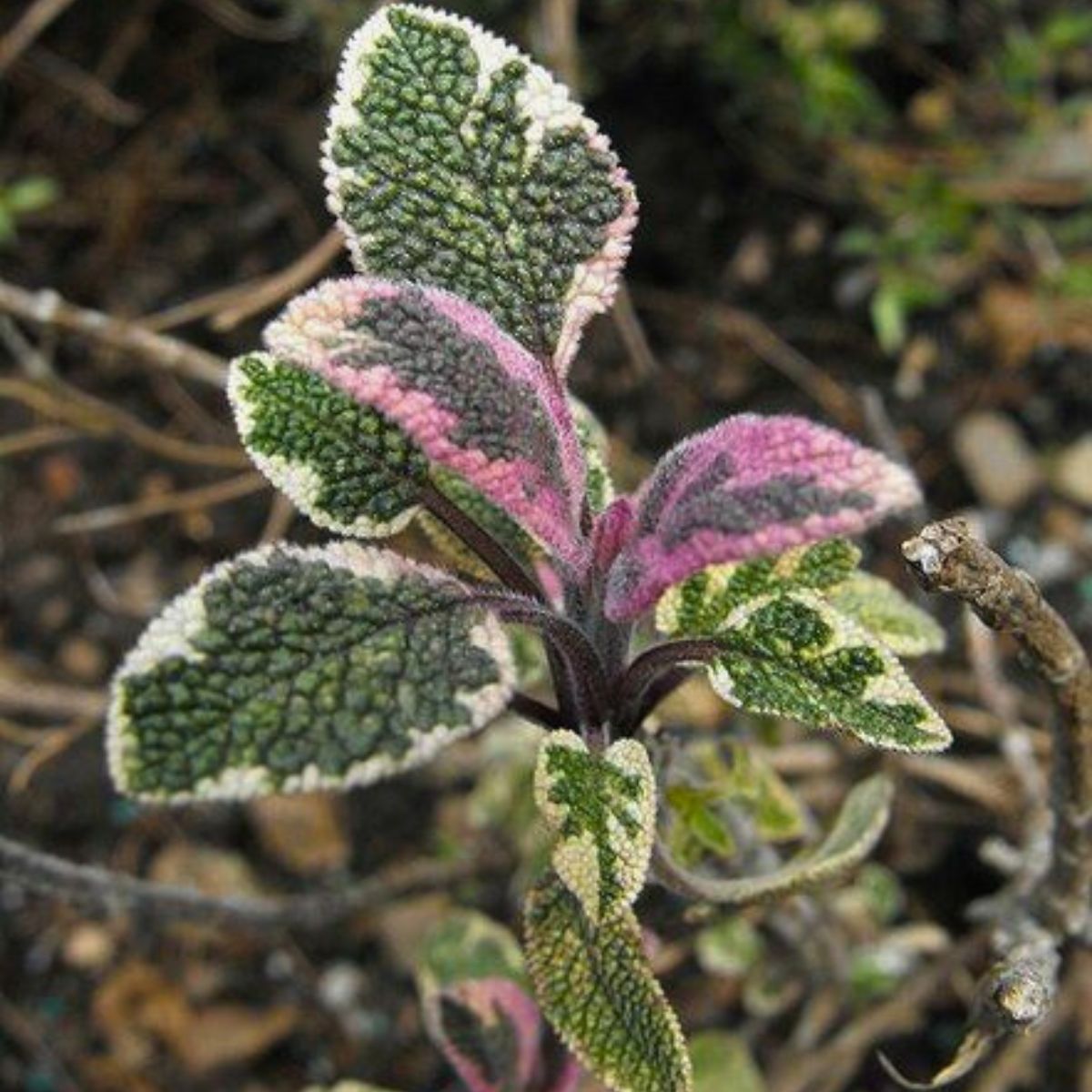
Plant Needs:
- Well-drained soil
- Full sun
- Water when dry
- Occasional trimming
- Fertilize in the Spring
12. Amaryllis (Hippeastrum)
You can find bold and blooming beauty here! Growing from bulbs, these houseplants often deter people from keeping them long-term. However, it is very simple to grow them, allowing you to amass more rare houseplants in your home.
If you water small amounts in the spring, and a bit more once it begins sprouting, your flowers will arrive a month or two after planting. Avoid getting water on the parts of the bulb you can see, and do not soak the soil to prevent rot. Come winter, trim the stems back, and water a little until spring. Originating in Africa, these plants are usually seen outside.
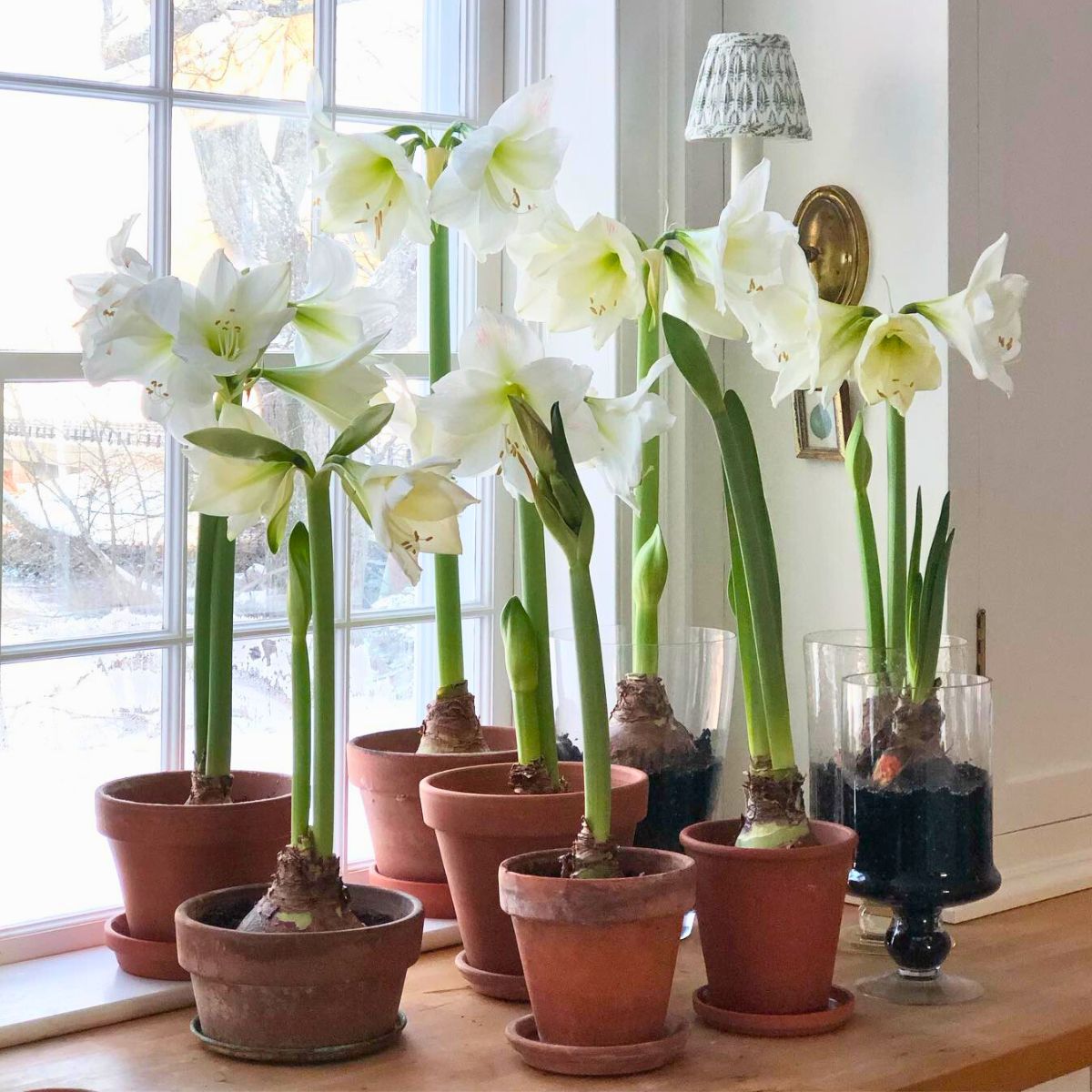
Photo by @in_the_fields
Putting your plants on your porch in the summer to get those summer vibes will benefit them as well. The popping color, large petals, and slender female flower anatomy make Amaryllis an irresistible beauty in the home as a houseplant!
Plant Needs:
- Indirect light and little water in winter
- Direct light in spring and summer (water when dry)
- Trim stems back after blooming
13. Porcelain Flower (Hoya Carnosa)
The waxy quality of the leaves and plants simply shouts rare houseplants! You will not find this type of Hoya in many households. It is a 2-in-1, with fascinating foliage and flowers. With their climbing vines, these houseplants do best in hanging baskets.
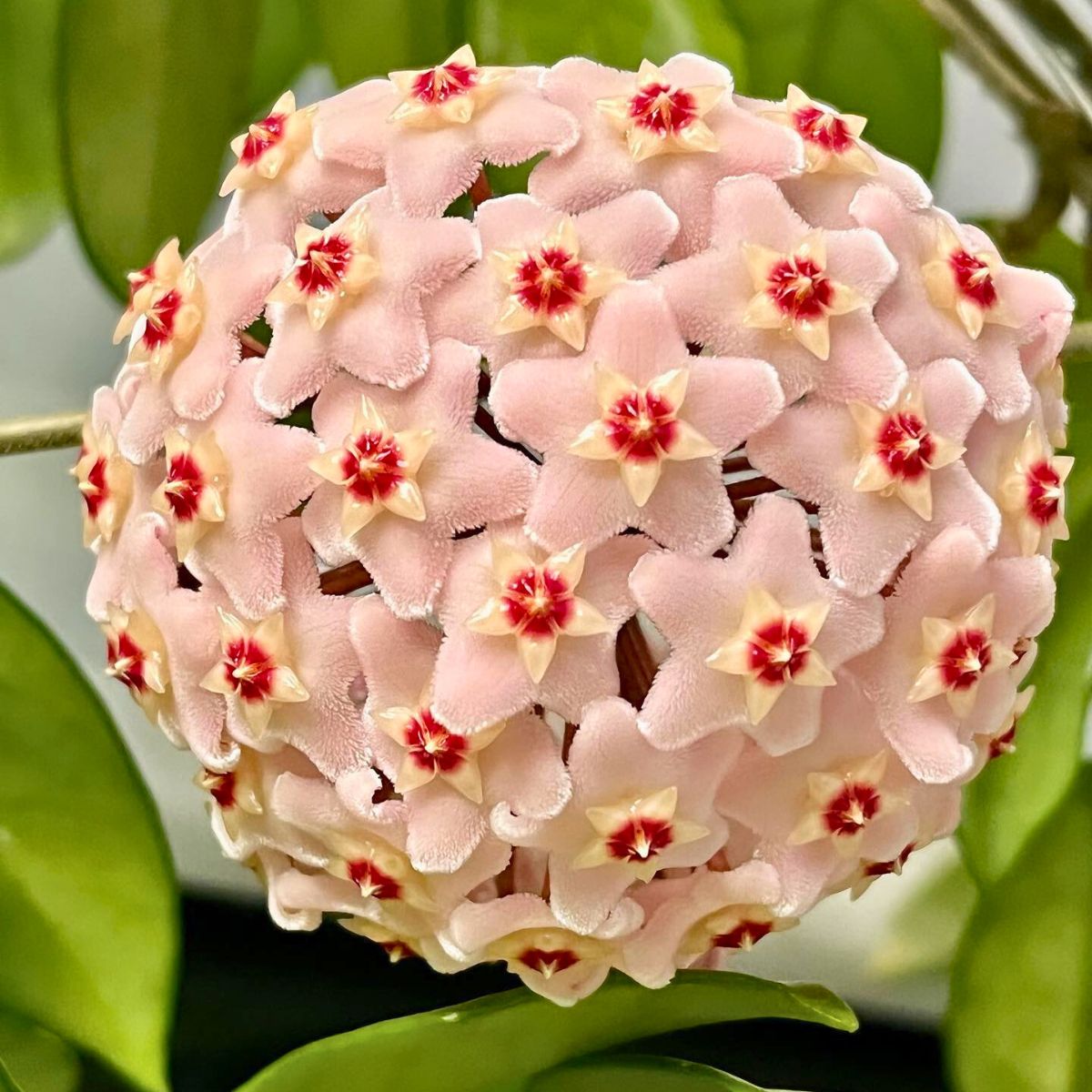
Photo by @plantyshenanigans
For them, however, well-drained soil is a must, and too much water is a quick route to death. Another rare characteristic is insensitivity to being root-bound. If you do keep these houseplants in the same pot, be sure to fertilize them.
If you are a propagation enthusiast, these houseplants are also easy to root. Once the houseplants are adjusted, they tend to grow well without much maintenance. You can additionally note that it is a humidity and a bright, indirect light lover originating in Asia.
Plant Needs:
- Bright, indirect light
- Water when dry
- Sufficient humidity
- Fertilize in spring and summer
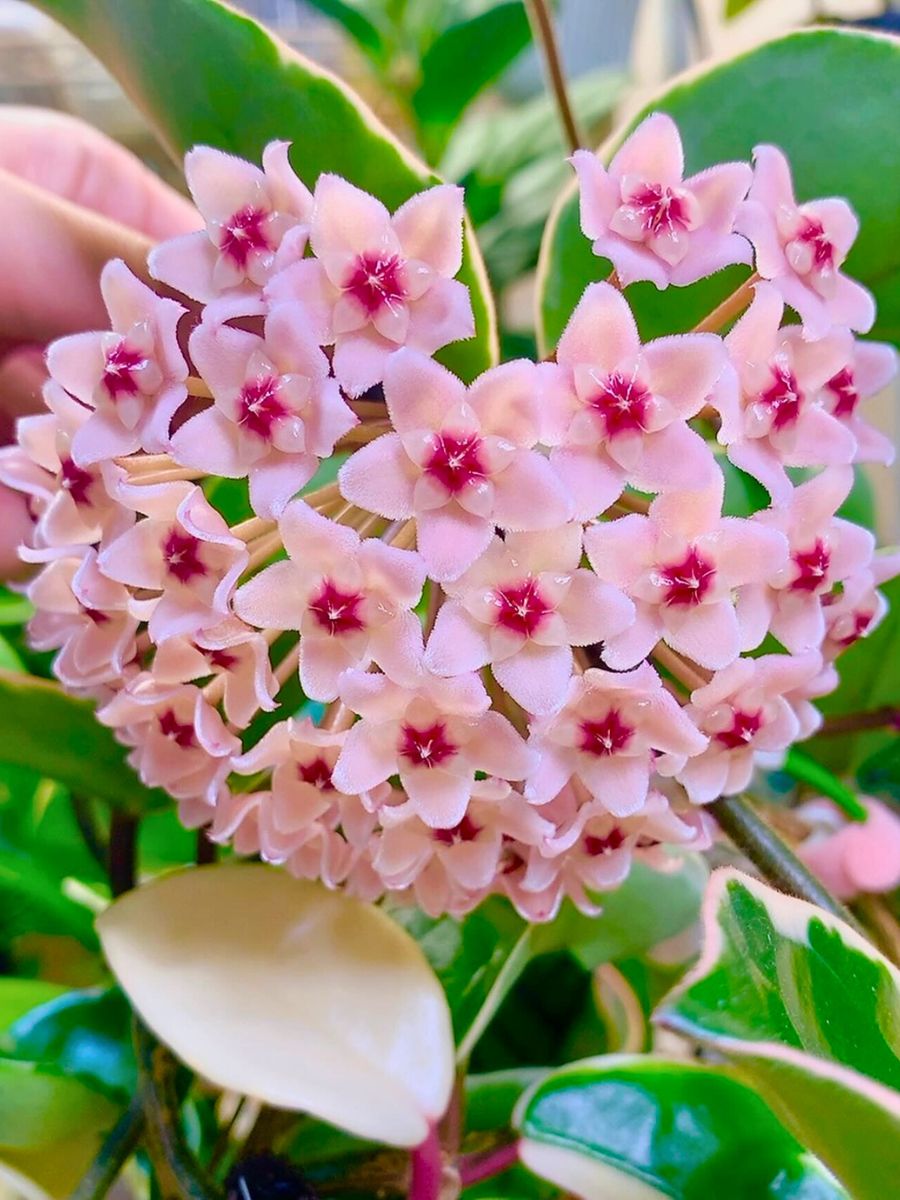
14. Bird’s Nest Fern (Asplenium Nidus)
Even one of the oldest plant families on earth makes it onto the rare houseplants list because
- Who doesn’t love ferns?
- Unique leaf margins
- Glossy leaves
Humidity and soil moisture are key to this fella's successful cultivation. You may fall in love with this fern, but sadly, propagation is only possible through the spores that the plant produces. This is costly and requires lab equipment.
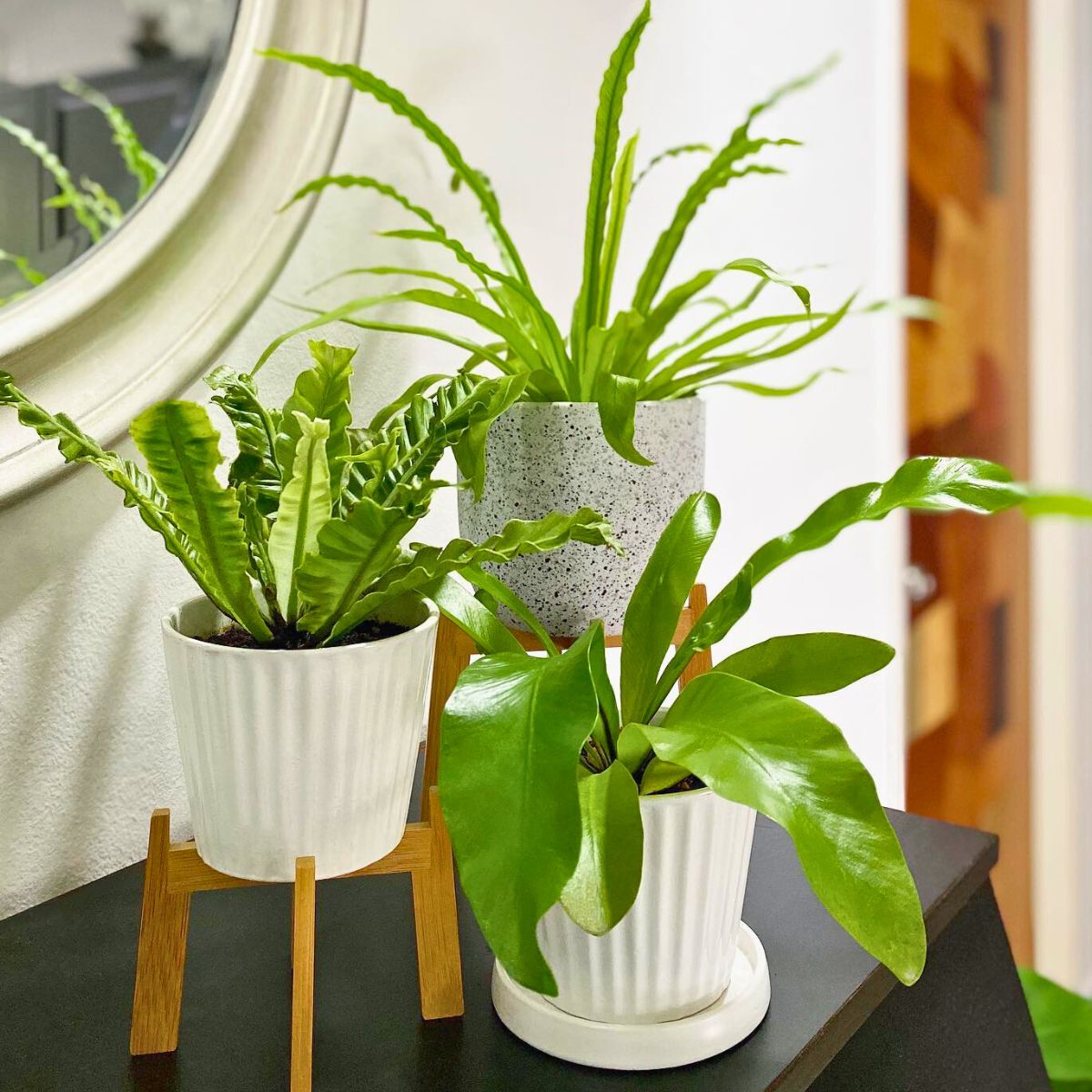
Photo by @terrapod
Plants evolved from water, and ferns are early in the plant timeline. They have spores (gametophytes) to reproduce, and water is necessary to pair up two spores to make a sporophyte (the fern). This fern does not like dry or soggy soil, so you must find a happy medium of consistent moisture.
If all of your direct sunspots are full of houseplants, this fern is versatile and can tolerate the corners of the room.
Plant Needs:
- Part sun/part shade
- Consistent moisture (not dry, not soggy)
- Water less in winter
- Can grow in a small pot
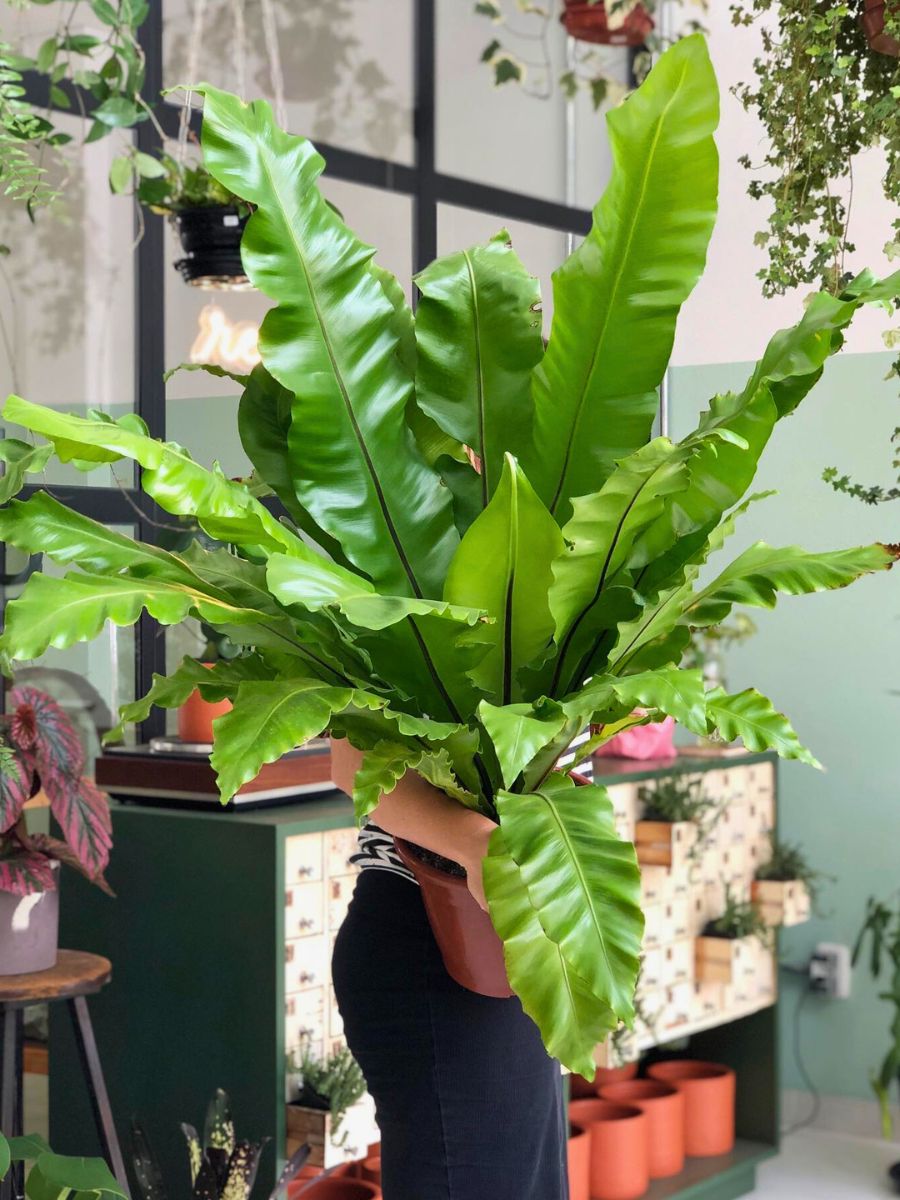
Photo by @seivabrutagram
15. Friendship Plant (Pilea Involucrata)
Originating from the tropical forests of Central and South America, this delightful plant has earned its name through its remarkable ability to reproduce and spread, fostering a sense of community and connection wherever it thrives. The friendship plant's charm lies in its unique physical attributes. Its rounded, succulent-like leaves, often adorned with a distinctive metallic sheen, grow in pairs along slender, trailing stems, creating a visually captivating display.
As the plant matures, it produces small, button-like flowers that further enhance its allure, making it a delightful addition to any indoor space. The friendship plant is, also, renowned for its remarkable propagation abilities. As it grows, it develops small, plantlet-like offshoots at the base of its leaves, which can be easily separated and repotted to create new, individual plants. This trait has earned the friendship plant its endearing moniker, as it readily 'makes friends' by sharing its offspring with others.
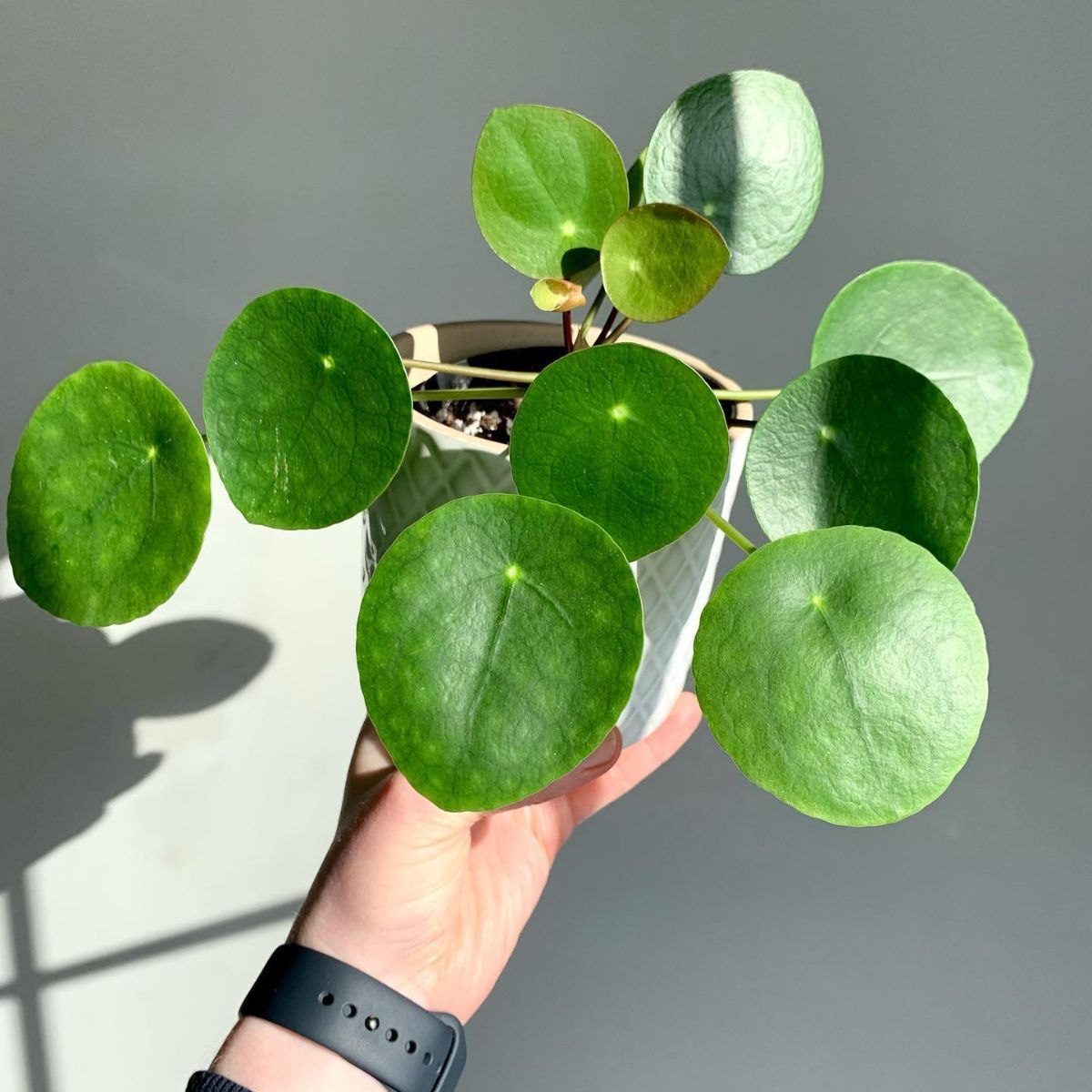
Photo by @wildwood_plantlife
The friendship plant's adaptability and low-maintenance requirements make it an ideal choice for both novice and experienced indoor gardeners. Thriving in a variety of lighting conditions and soil types, this resilient houseplant requires only moderate watering and occasional pruning to maintain its lush, cascading appearance.
The plant, also, grows upright and is easy to propagate by stem cuttings.
Plant Needs:
- High humidity
- Water when dry
- Trim dead flowers
- Bright, indirect light
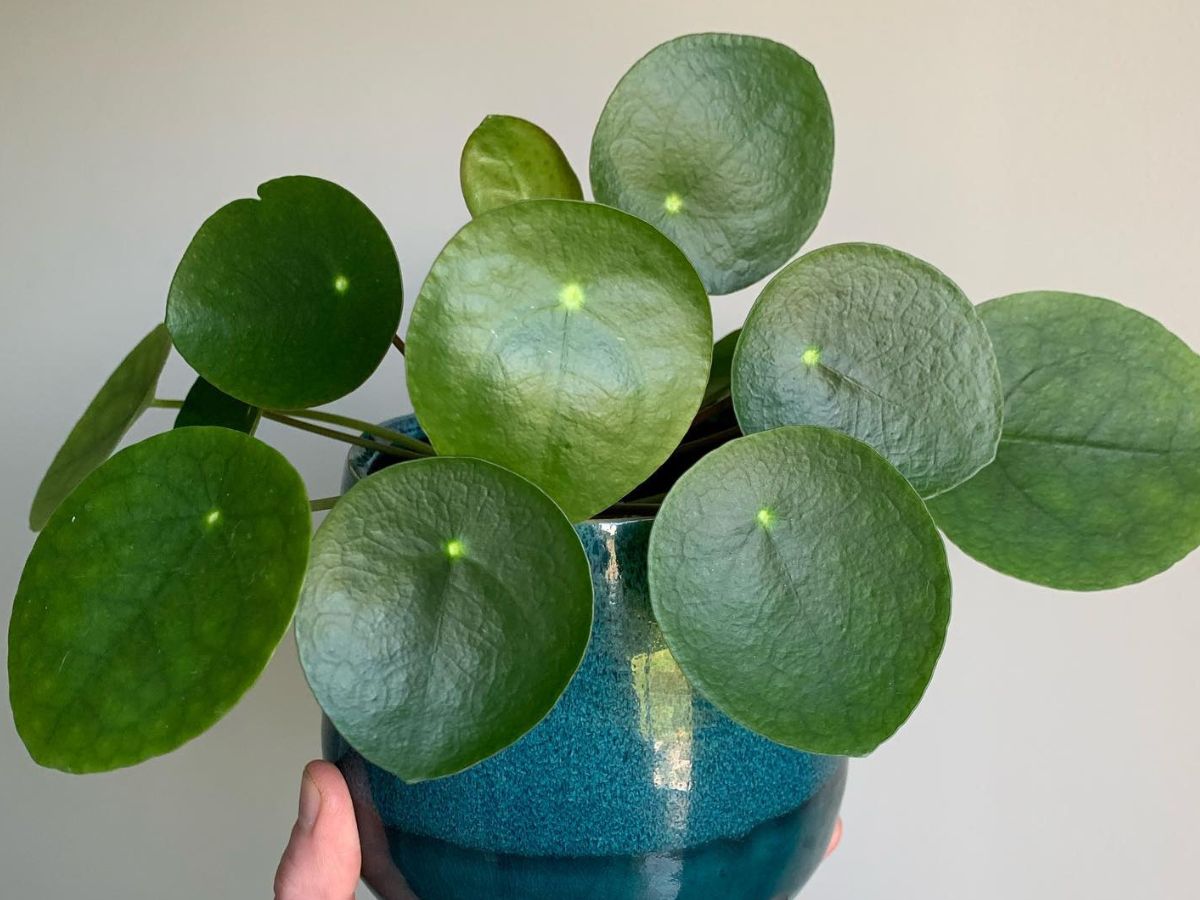
I know having so many options for rare houseplants may be overwhelming; there is only so much space in the house! The upside, however, could be that although they are rare houseplants, many of them can be easily found if sought after. Whether it be social media, your other plant friend, or the grocery store, rare houseplants are all around!
Feature image by @in_the_fields, header image by Designecologist.

